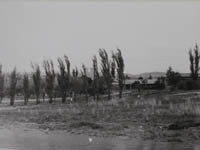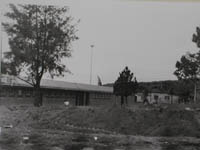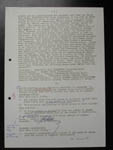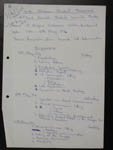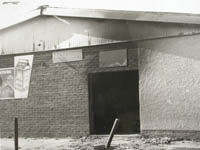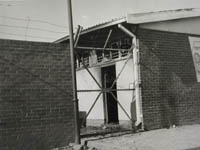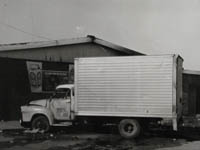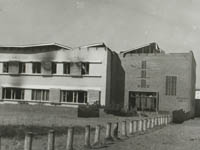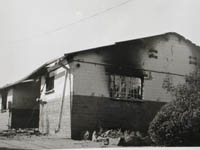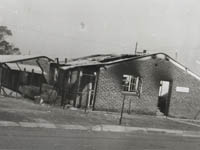Table of Contents
Acknowledgments Readers' Guide
Introduction The Narrative Official Stories The Participants Afrikaans Memory and Violence Final Thoughts Archive
Abbreviations Glossary
Gutenberg-e.org Columbia University Press
Shifting the Point of View
55The present, from which memory speaks, retreats further and further from the events of June 16, 1976, tempting the historian with historical distance and objective analysis. And yet, 22 years later, these voices from the past spoke urgently and directly, relentlessly demanding that they be heard, that the processes of historical memory not forget them. In temporal terms, they were removed from the events of June 16, 1976, by the intervening years, and yet they spoke directly, clear and sometimes vibrant with emotion, the images of the past crowding through the concerns that control the present. Even the small sampling above of the lived memories of ordinary people revealed the rich multiplicity of experiences, influences, and meanings that emerge with the shift to the experiential point of view of the protagonists. There is, as Ranajit Guha has pointed out, little that will protect against the "distortions" that inevitably alter the stories of the past because of the passage of time between the event and the telling of it. And there is little that will protect against the interference of the historian's own consciousness.
But it is interviews such as these, together with other voices that come to us more indirectly—through recordings, transcriptions of testimony, recorded statements and affidavits as well as through old letters, pamphlets, and speeches from the time of "the trouble"—that, combined with the shift in perspective I have proposed, allow us, through their rich diversity and their indisputable authenticity, to see something of a "past consciousness" that has so often been seized and claimed for narratives that were not the participants' own. In these stories, and with this shift, the participant is no longer "only a contingent element" in a narrative that otherwise belongs to the government, the resistance movement, or the historian. She (he) is instead an active, thoughtful, and spirited agent of her (or his) own history. If the participant directs and speaks (however eloquently or competently) the story her- or himself, just as she (he) made the history and experienced the events, what emerges is the complexity of the historical experience with multiple and intricate layers of meaning. Accounts of the experiences of ordinary people create a historical picture that may not be neat or straightforwardly argued, but that is a little closer to the multiple realities of historical experience. The shift in perspective that is a consequence of the presentation of the stories of the Soweto uprisings through the eyes of its protagonists allows us to see certain things differently, correct heretofore partial presentations, and complicate or enrich past explanations or interpretations.15
^topInvisible Women? The Gendered Nature of the Uprising
We know, feel and understand the weight and burden the children bear. We must now refuse that the suffering and hardships deter our aspirations. They are bone of our bone, flesh of our flesh. We can't, and may not remain silent and unmoved.—Sindiswa Gwazela, 1976
Among the things that most evidently divided students was gender. In the accounts of the young men, much as in the literature on Soweto, it sometimes seemed as if girls were hardly involved, and participant testimony either underplays their role or completely ignores it. Such testimonies underscore how the presence of young women and girls in the uprising has often been sidelined by history's focus on the leadership of the student uprising and on those who have traditionally been heard, tried, or persecuted. The evidence suggests, however, that girls were very much part of the uprising, their participation determined, especially in the early days of the revolt, more by their identity as students than by their gender.
Without a doubt, though, the experience of the uprising would have been very different for boys and girls. The roles of girls as housekeepers and caregivers (in the absence of mothers who worked in the white city) was often already firmly established, as was their acceptance of parental, especially a father's, authority and control. Although girls initially played a part in marches as well as in the student organizations, other realities and responsibilities—women's responsibilities—often intruded and influenced their later choices. For girls, the implications of claiming their freedom to be an active participant in the struggle were manifold and needed to be balanced against the needs of their children, if they were already mothers, and of their larger families. Those who were already mothers were not free agents, while so many young men were. Girls faced terrible choices, veering between the immediate need to protect their children and the compelling long-term goal of ensuring a future free of oppression. Either way, their decision would have been seen as a betrayal. Perhaps for this reason, women or girls also remembered the uprising differently. They were less likely to remember the events of those days only or simply in terms of the public collective memory, and they more often tried to negotiate the often emotionally difficult terrain of public and private lives in their remembering.
In some respect, though, it was the very perception of gender difference—and the assumptions, about the natural passivity of girls, that went along with it—that explains how that difference could be used to the benefit of the students. Young women and girls used their very "invisibility" to the eyes of exclusively male police force to perform some of the movement's most important tasks, such as facilitating communication networks between male activists in hiding.
60Unless prompted, men seldom included in their testimonies any commentary on the role of young women. Sam Nzima thought that girls had mostly stayed in the background. Sam: "They were not [involved]." Sam: "They were not [involved]. I don't remember a single girl who did [take part]. There could have been some, some girls in other areas maybe that would be active, but not so much. You could think about this and understand it in this light that, in the whole group that eventually left the country, there wasn't any girl, not a one that I think of … from the northern Transvaal. […] Girls were just in the background. We never had a meaningful active participation of schoolgirls in the struggle during those days." That this was not generally true is evident from Zakes Molotsi's references to the girls who went into exile with the groups he helped across the border into Botswana, although he agreed that the "percentage of women was small."16 Even in Sam's story, the girls eventually reemerged from the background, briefly. During the first strike at Tshivashe High School, police tried to arrest the "ringleaders" they thought they had identified. Sam Mashaba was among the first to be singled out, but the police released him and the others for fear of a major confrontation with the students when the girls also joined the strike in support of the boys. It is not clear whether the presence of girls stayed the hand of the police, but, in Sam's eyes and in those of the police, this was behavior that was completely unexpected.
Sam: "the police ... didn't expect that girls could stand up and do such a thing." Sam: "Then
what happened was, while I was there, the girls started to join, to come march from their dormitory and joining up with the boys. And
they demanded that I must be taken out. Then the police realized that arresting me was going to cause much havoc to the school than otherwise.
[...]
That was the only day whereby we saw girls, waiting, standing in solidarity with us, marching out of their hostels singing and they came
and they joined with the boys in the year that I was being arrested. And I think this should have signaled a clear message to the police
that didn't expect that girls could stand up and do such a thing."
At the level of leadership and institutional organization, the youth movement seems to have been dominated by young men and boys—an
analysis echoed in most of the historical literature and collective memory. Sydney Khotso Seathlolo (18) took over from Tsietsi Mashinini
when he left the country in August 1976. He, in turn, left for Botswana after a car chase, in mid-January 1977, during which he was shot
and wounded, and he was replaced by Daniel Sechaba Montsisi (20). It took six months before Montsisi's arrest necessitated another change
in leadership. Trofomo Sono stepped into his footsteps. However, behind these prominent names, there were young women, who would leave
their mark on SASM (South African Students' Movement) and the SSRC (Soweto Students' Representative Council) and were on the streets and
among the demonstrators. As Sam Nzima's photograph of Antoinette Musi (now Sithole) running alongside Mbuyisa Makhubu and carrying her
brother's limp body showed so clearly, they shared the pain, willingly and unwillingly. Of 662 people in detention as of September 30,
1977, at least 62 were women and girls.17
Who were these young women? Among them was Lilli Mokganyetsi, who had become very active in the student movement and who, despite being shot by the police at one point, continued attending marches. Among them also were the daughters of Patience Tshetlo, one of whom attended Phefeni High School, the other Phefeni Junior Secondary School. "She was really involved. She nearly got to exile." Patience remembered that her younger daughter was the courageous one, active on behalf of the SSRC in the schools, and a participant in the attempted march on John Vorster Square to claim the release of students who had been detained. Patience: "she was the one, she was involved in this..." Patience: "Ja. But she was the one, she was involved in this. She was staying … they usually send them in school, to go to that school, tell them that at this time, this time, they must go, and do this and this, the SRC [Student Representative Council]. Mhmhmh. When it became clear that nothing was going to prevent their daughter from participating in student action, Patience Tshetlo and her husband invoked their powers as parents, possibly more effectively because their children were girls, and "sent them to Pietersburg, their father sent them to Pietersburg."
Patience: "...she would be in exile." Patience: "Ja, if I didn't send them to Pietersburg,
she wouldn't be here, she would be in exile.
[…]
Oooh, is better because I didn't have a boy that time. Because maybe it would ... you know the other parents, their children were lost that
time, they don't know where are they. Maybe if I had a boy, a little boy of 16/17, I wouldn't know where he is now."
The several reasons for the real and imagined absence of young women and girls become clearer when we shift the analytical gaze away from
the clearly male representations so as to include and hear females. Girls were much more likely to have been drawn into family relationships
and duties and at an earlier age. The presence of children, either their own or younger siblings they were looking after, made the choices
and the judgment young women faced—what Zakes called the "courage to cross the border"18—both
harder and more poignant. In a time of great distress and uncertainty, Sindiswa Gwazela, for example, a young activist and mother who was arrested
by the police on November 24, 1976,19 wrote to her sister to "arrange for Tumies [short for
Itumeleng] future" and to "give her love, please give her all the love she'll need."20 To her 9-year-old
daughter she wrote:
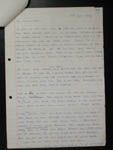
My Darling Baby,
Today is the day that I have to make a decision and you'll realize that it is a hard decision, when of course you've grown up to understand some of the difficulties one can be faced with.
[…]
I am sure your father can offer much better and the day you grow up, please my love be a better person don't be like me who is scared, who has no guts, who is a sinner in many a ways than one. God is my baby, remember that when all else fails, god is always.
There are weapons and wisdom that you can always employ, like pray Darling never forget this, say thank to people, say please, I'm sorry, forgive at all costs and lastly never betray trust never Honey! Please never.
I love you better than anything in the whole big world. I gave birth to you because I wanted you and for nine years, oh! yes nine solid years I breathed, I walked, I simply lived because, you were my show piece, my sole reason for living, but I failed you badly…
[…]
I love you my baby, God bless your soul.21

Sindiswa Gwazela's letters, confiscated by the police at the time of her arrest, permit a rare glimpse into the private turmoil of the young participants in the uprising. They clearly reveal how she was less able to protect her private life from the impact of her involvement in public politics. In Gwazela's case, even the most public events of the uprising brought private pain. Mbuyisa Makhubu, the boy who had picked up the dying Hector Pieterson from the ground on the first day of the uprising, was her nephew. In another letter, to Nombulelo Makhubu, her sister and his mother, she wondered, with reference to his disappearance for fear of the police, "what he might be going through, am I proud of that boy is a hero [sic], a soldier that never turns back on his pledge or vows, 'Vivat, Mbuyisa KaMakhubu.'"22

Gwazela was one among many young women detained for their participation in the uprising. On the day of her arrest she wrote a letter to a friend called Thabo. Its opening lines were ominous: "Never writing a letter was such a heavy task, just now it dawns on me that it might just be the last…" Clearly already in dialog with him, and referring to a conversation that took place earlier about "your concern and your doubts," she wrote about the decision she had had to make to continue the struggle that the children of Soweto had begun on June 16, 1976:
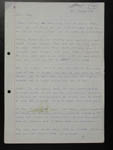
Thabo, I'm not turning back, this has become sort of a fixed course, me and you know, from our own experience in this land the dehumanization of racism and the extent to which it's proponents will go to impose their will on others. We know the pain, agony and suffering which accompanies the struggle for freedom.23
Undoubtedly, fear for the future of her own child made the struggle more poignant for her. She continued:
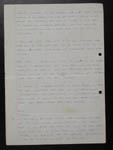
We know, feel and understand the weight and burden the children bear. We must now refuse that the suffering and hardships deter our aspirations. They are bone of our bone, flesh of our flesh. We can't, and may not remain silent and unmoved.24
From the letter it is clear that the decision to be politically active and part of the struggle was not an easy one, especially for a woman, or one easily accepted or supported by everyone:
Pressures exercised by the system must not impose conditions contrary to our wishes and must not cause a delay in the struggle for liberation, just now as writing I know that I've spoiled my friendship absolutely but then again try and understand, my dear Thabo that, I'm with no alternative at all. I know now again that you'll think your suspicions were right, fine, if that's what you'd like to believe of me, an idiotic, suicidal, masochistic and irresponsible being, probably yes.25
A decision that would brand her as a sellout, or as someone who could not see the struggle through, was too much to bear, no matter how good the reason for withdrawing might have been:
But Thabo I could never bear the wrath of my people should I chicken out, you know that no amount of explanation is going to leave me blameless, people would always view me as one of those, I promise you I'd rather perish than leave with that branding.26
The postscript to the letter was again full of imminent danger and clearly indicated that Gwazela knew of the risks involved in her political life.
75P/S I'm sacrificing so much on this, that's including my baby but then again maybe for her benefit. I'll keep in touch if you don't hear from me know the game ended. I can trust you to know Tumie is alright. 11731 O/W/E, my mother is Mrs. H. T. Macala. This remember is for the love of my people that I'm doing it.27
Lilli: "… I was the person who was taking all these kids." Lilli: "I mean that time it was, parents were crying, you know, parents were crying there children were disappearing by day, every day. And you know, when parents were crying … I was the person who was taking all these kids. I mean in our vicinity, you know. Have you seen this … something like for instance your mother getting to a neighbors, crying, no my children are not at home, I have learned that they have skipped the country, what, what, what. You know, I would be there, knowing very much that I am this person who took them." For those young women unencumbered by children, there may have been less that held them back, less that hindered their equality with the boys. Young and energetic, Lilli Mokganyetsi in her story takes us deep inside the activities of the student movement to reveal that young women and girls were quite central to the uprising, although their experiences were often quite different. She too understood that political activism had profound personal consequences, perhaps more strongly at the time of the interview in 1993 than back in 1976. She knew that parents' pain and worry centered around the disappearance of their children, never quite knowing whether they had been killed, detained by the police, or driven into exile. Nevertheless, she contributed to that worry by helping many of the young activists leave.
Traditional assumptions about girls' essential passivity and domestic identity clouded the perceptions both of parents and of the police, at
least for a while, and students made good use of such assumptions of difference while using them to further their own goals.
Sam: "they wouldn't dare to just be out." Sam: "I have never given myself much time of looking
at the reason why, but I would think that this has been partly because of the cultural background [unclear] where women are women, they don't
have to be active in anything. I want to believe that we had some girls that sympathized and understood the conditions, but they wouldn't
dare to just be out."
After student activists learned that she had been shot in one of the marches, they
approached her and introduced her to Dr. Nanaoth Ntshuntsha, a Soweto naturopath. At first she was suspicious, surprised at the "shabbiness
of the house, not to say it was dirty, you know, just not what we really expect from a doctor's house," and, unfamiliar with the word
homeopath on the diplomas he showed her, she looked it up in the dictionary. He asked after her name and translated from Perpetua, her
middle name: He never referred to her by anything but "Everlasting" after that.
Lilli: "but I could guess that he was running away from police." Lilli: "… he said to me,
please Everlasting, if there are boys whom you know that police are looking for, interview them in style, and if they want to go to Russia,
you bring them to me. Please. Okay, so now you know, this, every day, I was moving from home to that doctor.
I was now organizing for him [Ntshuntsha], all the boys in the location. You know, some of them, when I look at them now, I just close my
eyes. I was organizing people for him. Fortunately enough, in our neighborhood, the very following house next to us, there were boys whom
we were attending with at the very secondary, but they were not staying there, they were staying in Moletsane and such another township. But
so indeed they were staying in our neighborhood, the very next door house. And it was only boys, it was only boys. You know, during the day,
they are not there. It's only one. You could see that there was something happening, maybe they were running away from police from their homes.
So now, one day, I … approached him, I said, "why are you staying here?" He said, "no I am looking after my sister's children." You know,
I went, but I could guess that he was running away from police. Then I gave [told] him everything. He said: "I am telling the truth?" I
said, "yes. But I'm not going there with a group, a mob. I am going with you alone, let's go there." We went there, everything was successful.
The first group of boys went away. There were eight. They went away [her voice almost a whisper]."
It quickly became clear that she was not there for treatment of "this hand [that] was really troubling me. You know when I woke up, it would
be as swollen as this, and I can't do anything and if you get to the doctor, there is nothing they can help me." For several months, Lilli
became the go-between who facilitated the way out of Soweto for those boys who were in hiding. To those who needed a way out, she would tell about
Dr. Ntshuntsha, interview them, and give them directions to his house, from where they would be taken to the border. It was not unusual for girls
to run errands for their parents, and Lilli used traditional expectations of her as a girl to cover for her clandestine activities.
Lilli: "this is the time we have been oppressed ... we have got to do something.." Lilli: "They discussed, they made a conversation, he … My father … is not professioned but he has been to school, he understands this. He also is in the very same thing, he doesn't, although he doesn't do anything. But he understands, this is the time we have been oppressed, and then we have got to do something. Although he is not one of those [activists] … but he understands. Okay, he discussed with this man, he discussed, he discussed. And then, you know we were not paying him anything. But my father said, 'no, how can that really happen.' He said, 'no I am serving for the black community.' He said, 'even though, but I feel it's unfair. I feel, I am going to give you … anything maybe you might be often here.' Then he gave him something, you know, just a little fee. So now the problem of healing was over." For a while she was even able to outsmart her father who had "noticed that there was a certain movement here." To his questions she replied that friends had introduced her to a doctor who could help her with the hand that by this time was hurting her very much. Upon his request, she took her father to see the homeopath. Her father was as surprised as she had been at the condition of his house, but Dr. Ntshuntsha managed to convince him that Lilli was indeed there for treatment of the bullet lodged in her upper arm. (See Chapter 6, "The Wounded")
Lilli was supposed to leave South Africa with Dr. Ntshuntsha and the last group he was to take across the border in December of 1976. Her
older sister, however, alerted her father. It was a time when, as Zakes Molotsi put it, "most of us, our parents … parents just [saw]
everyone disappear." Lilli's father pleaded with her not to leave, to complete her education, still arguing that it was the only proper
path to advancement. By keeping her busy he managed to break the connection between Lilli and Dr. Ntshuntsha just long enough that she
missed the planned departure into exile.
Lilli: "Dr. Ntshuntsha has been arrested on trying to cross the border..." Lilli: "Then my father addressed
me, very strongly. That was the first time that I have seen my father as pained as that. He said to me: '[I] don't say you mustn't do anything.
But look now, you are still doing Form 2, Form 2. I don't say you mustn't … you can, but first of all, if you leave now you must know that
you are not sure that wherever you are going, you are going to be taken care of. You don't know whether you are going to have a bed to sleep
on, whatever. You see … so many things. So now, it is wise for you to attend school, at least if you have passed your Matric, you can do
anything. Then you'll be our ambassador maybe."
The following day he took me again to the shop. So that I should lose contact with this man. And of course, I lost contact with him. The day when
they … when now I knew that it was supposed, … it was on the sixth of December, when Dr. Ntshuntsha was supposed to leave the country with
Jabu and me. Two weeks thereafter we heard, I read in the newspaper that Dr. Ntshuntsha has been arrested on trying to cross the border,
Jabu was shot, but he managed to escape, they don't know whether he is still alive, or what. Dr. Ntshuntsha is at the Natal prison, Pietermaritzburg
prison. So now I could have been part of it. That was the last time that I ever heard of Dr. Ntshuntsha. That was the last time that I ever heard
of people who are sent."
Dr. Nanaoth Ntshuntsha was detained on December 14, 1976. According to the South African Institute of Race Relations, which reported on the
case, his wife was refused permission to see him and could not find out where he was being held. On January 11, 1977, the security police
reported that he had been found dead in his cell three days earlier. He had allegedly torn a vest into strips and hanged himself.28 (See also: Chapter 3 "Telling Soweto: Part 1—The Cillié Commission")
Lilli: "I'm number four. There are still five kids who my parents have to take to school." Lilli: "[W]hen I was doing Form 5, I got pregnant, and then I had to leave school and then I stayed at home. At home … you know, it was so painful, then after giving birth, you know, the immediate thing that I could grab was this teaching. So you know, I even felt somehow that, because we are that family of nine, I'm number four. There are still five kids who my parents have to take to school. It seems now if I am to get to the varsity I'm going to deprive the others, because when I was in boarding school, of course, I had everything that I wanted. Everything, so now I felt let me grab this, at least at [teacher training] college it's not so expensive. And then if I would let to further my studies, I would do that while working a family home now. Soo, that is why. […] then I completed my Matric there, and then when I did my college education I went to Kwakwa in the Free State, completed there, and then I started teaching in 1986 at Mutse [?]the very town, in KwaNdebele. " Lilli's father, like Patience Tshetlo, invoked all of his parental and fatherly authority and sent her away to boarding school in Pietersburg, in the homeland of Lebowa, north of Johannesburg. After that, she remembered, things changed and "everything wasn't just as good from there on." Even as her own perspective of the conditions of black South Africans became more sophisticated and she began to understand what she had been fighting for, she found herself in a setting in which "everything, it's wrong. You don't have a say, you don't have to ask—everything, it's dictated to you. If you ask, if you start asking the principal why are you setting us this type of food, whereas we pay him, then you are chased away from school." If the students addressed oppression or asked a question, they were immediately labeled "politician, and then they would chase you away. Before chasing you away, police has to come in the school premises, harass you, take you to jail." An unexpected pregnancy, growing responsibilities, and the reality of five younger siblings coming up behind her completed the process of exclusion and forced her to give up the dream of university. She did, however, eventually finish high school and attended a comparatively inexpensive teacher training college. She became a teacher in 1986.
Young women remained, then, and even in the later literature, historically invisible because they suffered under several burdens. The student 'movement was profoundly gendered and chauvinism dictated that the leadership generally be in the hands of the young men. Their ability to act independently was also contingent on family relationships, economies, and duties. Strong cultural norm constrained their ability to act independently, and they often had to define their role in a multiplicity of ways, negotiating the difficult and contradictory terrain of competing duties and loyalties as one or the other circumstances that shaped their lives made its power felt.
Responsibility for children, their own or younger siblings, and bonds within the family and among friends were among the conditions, processes, and practices that determined the involvement of many young women in the resistance and shaped their experience within it. Girls therefore also remembered these events more in relational terms of their links with other people, their children, their parents, their lovers, and their friends, rather than in the political terms of resistance and heroic narrative.
^topUrban-Rural Connections—The Zoutpansberg Students' Organisation (ZOSO)
Fortunately enough, we secured contacts with Sandile Seth Mazibuko who introduced us to the Urban Community.—Allen Budeli, president of ZOSO, 4 June 1977
Geographical distance and different concerns would certainly have separated rural and urban youth. During my research, several black colleagues and friends claimed a more prominent role for student organizations in the countryside. They pointed out to me that students were united by a common purpose, that networks of communication had been established well before June 16, and that the uprising happened everywhere simultaneously. This opened up tantalizing possibilities about the level of organization in the student movement, raising the possibility that political action had been coordinated and preplanned, and threatening to overturn accepted understandings of the uprising as having originated in Soweto. The evidence, however, suggested otherwise and was supported by the literature and by the popular notion of the centrality of Soweto to the resurgence of resistance among the youth.
It had always puzzled me how the uprising could have spread as fast as it did, and thoughts of preexisting networks and of strong student organizations in the rural areas stayed with me during my research. I therefore immediately recognized the importance of several documents produced by the Zoutpansberg Students' Organisation (ZOSO).
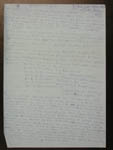
85 Found among documents confiscated during a raid by the South African Security Police on Lekton House on October 19, 1977, was a handwritten report of ZOSO. It was dated June 4, 1977, and signed by Allen Budeli, B. P. Ramaphosa, and M. L. Ramabulana. Like many such student documents, it had been submitted as evidence in a civil-court case brought by the West Rand Bantu Administration (WRAB) against the insurance company that had covered WRAB against riot damage.
On September 6, 1976, student "delegates from Khwevha, Mphaphuli, Tingazwanda Training College, Venda College of Education, Phiriphiri and Rambuda" had launched the Zoutpansberg Students' Organisation at Sibasa, a small town in Venda, an area—it is roughly 200 miles north of Johannesburg and abuts the Limpopo River and the border with Zimbabwe (then still Rhodesia)—that was slated to become one of South Africa's "independent homelands."29 Here was evidence that Soweto was not just Soweto, that a privileging of the geographic place that was Soweto had resulted in a muting of stories from further away and in a neglect of the multiple ways in which the events that started in Soweto were picked up by others around the country.
The issues that students in Soweto protested were neither new nor different for student activists in the rural areas: Bantu Education, the ineffectuality of their parents' generation, abuses by local authorities. As another student activist from Venda pointed out, "it is important not to focus only on urban areas,"30 not because a rural focus is necessarily better, and not because attention should be deflected away from Soweto, but because a careful consideration of how these issues played out in the more rural areas allows a more complex and rich understanding of the nature and extent of the Soweto uprising. It is an understanding that more closely reflects the power of the youth movement, permits a sense of how the students were gripped by a new sense of agency, and sheds light on the universality of the issues the students tried to address, issues that, while emerging from outside the city, also informed the leadership in the cities. This awareness engaged their imaginations, gave them a sense of power, and helped them to counter any fear they might have had of the police. It confirmed the justness of their issues and strengthened their resolve, and it explains how the uprising could have sustained itself for so long and in so many communities in South Africa.
Students were acutely aware of the issues that divided them and that provided the security police with the means of undermining them. Although these differences were real and not easily put aside, students worked hard to turn them to their advantage. There is some evidence, here and in the life history of Mamphela Ramphele and of other members of the Black Consciousness Movement,31 that the connections to the countryside were real, strengthened perhaps by the practice of the South African government to banish people to their rural hometowns as a way to remove them from the hot spots of political activism in the cities. Ramphele, for example, was restricted to Tzaneen in what is now the Northern Province in 1976. Although she was officially silenced, her presence there would have had an impact on local politics and would have provided opportunities to visit and socialize, if not organize and conscientize. Evidence such as that of ZOSO, the student movement in the north, has implications not only for the genius of the Black Consciousness Movement, which managed to turn the practices of the government in its favor. Despite the exceptionality of these documents and the limitations of the evidence, it also suggests important new directions in research, which has tended to sidestep the rural dimensions of the student movements of the 1970s and which might lead to an upending of accepted theories of the uprising. Assumptions that the uprising spread unidirectionally outward from Soweto need to be reexamined, and they are better understood when we begin to pay close attention to the voices of the participants everywhere and to hear their stories about what the many influences and their directions were.
Just as the women's stories shifted the perspective to a more gendered analysis of the uprising, Sam Mashaba's story introduced into my view of Soweto a physical shift to a point of view geographically outside of Soweto. It also introduced a conceptual shift and provoked a consideration of the directionality and the causality of this movement that engulfed the entire country.32 For young people from the city "there is no question about the prominence of Soweto" in the uprising, and there is no question that the uprising began with a student march there. Zakes: "most of us were from … in Soweto" Zakes: "So now, it's where all these things started, thus far if you look at the generation which left during '76, basically, most of us were from … in Soweto. Other areas started to come later, but '76 most of us were from the Soweto area. Because we were the people who were directly affected." "The stuff in our schools pales against what happened there" in Soweto, one student said. There were, however, many local dynamics that mirrored the issues in Soweto, informed them, and further radicalized them. In Venda the impending talks about "independence" and the hated homeland leader may have been foremost in the minds of student activists, and yet "still it was connected."33
90The exclusive focus on Soweto was shared even by the Botswana officials who were debriefing young South Africans fleeing across their borders into exile34 and establishing whether or not the person before them was leaving the country for political—and therefore legitimate—reasons. Those who fled into exile from places other than Soweto were often treated with suspicion and disbelief. The newspapers reported only on the SSRC (Soweto Students' Representative Council) and SASM (South African Students' Movement). Border guards had never before heard of the Zoutpansberg Students' Organization, and suspicion of ZOSO was present even among the young activists themselves. At a meeting of young exiles called by the South African Youth Revolutionary Council, which replaced the SSRC in Botswana, the division became clear. Almost everyone present had been in Soweto, and Tsietsi "Sheriff" Mashinini was extremely wary of the young activists who were from Venda and other parts of the country that were not familiar to him.35
But students like Sam Mashaba at Tshivase (Sibasa) High School, "which was seen to be the centre of this movement" in Venda, were very aware of the broader issues of apartheid and of the immediate concerns in their own schools. Sam: "I knew what was happening in South Africa." Sam: "I grew up in a family that was a bit open, that had a vision, regarding the injustices, the unjust practices that were taking place. And the main contributing person to my background here, was my elder brother, who kept on indoctrinating me while I was still a very small boy. So when I went to secondary school, for my secondary education, already I knew what was happening in South Africa. Maybe in a broader struggle than most of my contemporaries." Mashaba led much of the strike action at his school, together with a young man who had been sent to school in rural Venda from Pretoria, the city immediately to the north of Johannesburg. Students at Tshivase (Sibasa) High had successfully boycotted classes at their own school for about three months and felt that they could do anything, that nothing could stop them. In November 1976, with year-end examinations looming, the student leadership "faced an education dilemma" [sic].36 Sam: "Mainly I was leading it." Sam: "What should I tell you more about my involvement? I should tell you that when the whole strike happened 1976 I was leading it at school. Mainly I was leading it. To an extent that when I was arrested I became accused number two, and accused number one was a friend of mine, that we associated with very well. But I became accused number two, and this accused number one was a young man that came from Pretoria." To take the exams would mean to support Bantu Education. A boycott would prevent them from continuing into the next academic year. There are a series of strong parallels between Sam's version of this story and ZOSO's report, according to which the executive "decided to boycott the sitting for exam by means of circulating pamphlets throughout." Sam's description of these activities lends support to the ZOSO report.
So we would go out and organize other schools as well, go traveling as long distances as, covering long distances as about 40, 50 kilometers, without any sponsor. We would just do that from our pockets, as students from our pocket moneys, sacrificing our time.37
Students at other schools, such as Mpapuli High School, were more cautious and fearful of the nearby police station. "The aforesaid boycott," the report continued, was therefore "almost a failure due to various conditions prevailing at the school concerned. Ultimately a rough division appeared in the ranks of the students."38
[I]t was the first day of writing examinations for the senior students, that's form five, standard ten. And then we decided that we were going to tear, to destroy all the examination papers, because we didn't want to write "Bantu" examinations.3995
[S]ubsequently those from Tshivhase High decided to use force to that effect.40
Sam: "...we ordered the busses that they should take us to where we wanted to go." Sam: "To be
transported to other schools so that we should destroy the [whole] examination process in all other schools… The busses came from diverse
angles, diverse areas of the country, mostly from the eastern side of the country. And also from the northern side of the country … Makuya,
such areas, as you know. And so we knew, that we could possibly come up with about four busses, and we did that. We went out of the school
premises and we went to the main road and we blocked the busses, hauled all of the passengers out, got into the busses and we ordered the
busses that they should take us to where we wanted to go. And they took us to the schools where we wanted to go.
So, I led the whole group and we got into the examination room where the students had already sat, and we told them that they should get out,
grabbed all the papers that they were having, even those that were not distributed as yet, and we destroyed them. We bent them, we tear them,
just confiscated all of them, and we even went to the office of the principal and we demanded that we must be given the balance of all the
papers of other subjects. During those days they would bring all the papers of the examinations of all the subjects [even to return in the
two weeks to come?]. So we demanded all those papers, and we were given all those papers, and we destroyed them."
"Vendaland," as Seth Mazibuko called it in his letter cited below, is a rural area, and the schools—Tshivhase, Mpapuli, Khwevha—were
many miles apart. The students from Tshivhase therefore decided to hijack buses to get to other schools and disrupt the examination process
there.
This led to the arrest of some of the student leaders, who are 37 in number. The necessary arrangements were made to secure legal advice (N.B. This case is still on even now there due to lack of substantial evidence by the state against the accused.)41
We were 35, all the students that were arrested at school and we went to prison. We stayed for about two months in prison. And eventually we were taken to court, where we appeared, magistrate's court, locally at Sibasa. And we had some legal representatives that we didn't understand so much as to how they were organized, but later on we understood that it was through the BPC political organizations—Black Consciousness movement. So these representatives, legal representatives, they came and they stood on our behalf until the case was transferred from the magistrate court to the regional court, and it went to Louis Trichardt. At Louis Trichardt, that is where the case ended eventually. But there had been some rumors then, you know, there had been some rumors that we would end up locked [up], that we were going to end up in Robben Island, and all things like that.42
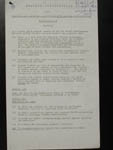
But for this unusual document that sketched the (brief) history, constitution, and strategies of ZOSO, the shift in perspective that Sam's story suggested may have remained part of one person's narrative and understanding of Soweto. This handwritten ZOSO report was significant evidence by virtue of its being found among documents confiscated by the South African Security Police during a raid on SASM headquarters at 505 Lekton House, in Johannesburg on October 19, 1977. Its presence among those documents was both signpost to and evidence of the connections between the youth movements in the city and those active in the countryside. Allen Budeli, an 18-year-old student at Khwevha High School, between the towns of Louis Trichardt and Sibasa, was the founder, a member, and the president of ZOSO. He had helped launch the organization in September and had drafted the report. SASM's links to Black Consciousness and a perception among students of its radical character had made it suspect for many. The Student (Black) Christian Movement, for example, was one of the strongest groups in the schools. It was rigid about not getting involved in politics and did not want anything to do with SASM.43 The founding of ZOSO by Budeli, Ben Ramaphosa, and Emmanuel Ramashia—all members of SASM—was an attempt to create a representative council more inclusive of all students and less readily seen as connected to SASM, SASO, or Black Consciousness44, a necessity that the youth organizations in the city similarly grappled with. "We tried very hard," the ZOSO report read, "to open contact with either SSRC, SASM or both." In May, Seth Mazibuko, one of the leaders of the SSRC and later of SASM in Soweto, introduced the student leaders from the north to the urban community. After the initial meetings,
[a]s a follow-up were held talks with the current SASM organiser, S. S. Mazibuko and company. The following steps were, inter alia, agreed upon:100
(I) Affiliation of ZOSO to SASM.
(II) Financial backing to be provided for ZOSO.45
ZOSO quickly established three branches in northern rural-area schools and was successful in organizing commemorative services at almost every secondary and high school. "More importantly," ZOSO could report, "almost all business centres closed in solidarity with the 1st Anniversary of our Liberation Struggle's Major Offensive."46 When repeated and sweeping, sometimes mass, arrests in the second half of 1977 started breaking the momentum of the uprising,47 the student movements too shifted their tactics. Allen Tembane Budeli, who had several times traveled to Johannesburg to meet with members of SASM and the SSRC there, was elected president of SASM during the Fourth General Students' Council meeting on July 4-7, 1977, at St. Ansgars Conference Centre in Roodepoort, near Johannesburg. He replaced outgoing president Mzuvukile Maqhethuka.48 The election was not an accident. Budeli had a gift for leadership and a remarkable command of language and was prominent among other high-school students for his outstanding academic record. In addition, he had helped establish student representation in the north and nurtured the links to the city. There had been connections and shared agendas all along, and his election was designed both to give profile to the other regions of the country that were involved in the struggle, to increase national effectiveness through regional representation, and to protect the leadership of the movement against police harassment, which had grown in intensity in the cities. There was a sense that Seth Mazibuko was under threat and that there was a need to diversify the leadership.49
Until Budeli's arrest on October 1, 1977, vice president Seth Mazibuko then reported to him in Sibasa. This correspondence was marked by news of detentions, financial problems, and a general sense of struggle in the face both of continued confrontation with the authorities and of loss of leadership, either to detention or to flight into exile. In handwritten draft notes for a "history of SASM from 1976-1977," Mazibuko commented on the many arrests and detentions of SSRC members during the year and wrote, "SASM in 1977 has not yet done much … but [is] promising to do so, but at the Cape is doing much and up North."50
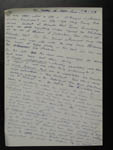
On September 28, 1977, he wrote:
I [am] hereby informing you about the [im]mediate departure of Zweli Sizani the Organiser of the Organization and the detention of Sibongile Mthembu the General Secretary. Zweli Sizani has left the country after being highly wanted by the security police. Sibongile Mthembu was found in a house at Emdeni Extension, in Soweto on the 6th August.51
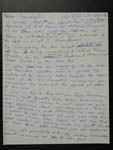
In another letter, Mazibuko explained that he thought it was going to be necessary for the National Executive to meet soon because the departure of the two executive members "has disorganised the aims and the agenda of SASM for this year." In the letter he described his trip to King Williams Town, Dimbaza, Durban, Graaf Reinett, Thaba Nchu, Vereeniging—crisscrossing South Africa—during which he requested reports from each branch and was "very happy to tell you that SASM members are working hard. In Graff Reinett [sic] we have three SASM members who are detained." Three new branches of SASM had been established in Alexandra township, Thaba Nchu, and Vereeniging, and plans were being drafted for a national seminar. Mazibuko expressed the hope that he would soon be "coming up to see you," pending the outcome of a discussion with the acting executive.52 It was not to be, and the exchange ended with this letter (written in October 1977) to all branch and general secretaries of SASM:
I am very much aware of the pressure and harassment of the police to SASM members and Executive but I request that we must keep ourselves in order and in touch.
I again sadly inform you about the detention of our President Allen Budeli from Sibasa (Vendaland) and the other members of SASM and highly praise the work SASM has done up North and other areas.53
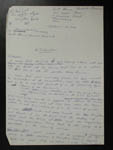
105 The challenges to such organizations as ZOSO were considerable. ZOSO reported that they lacked the funds to facilitate their plans, that parents were "disorganized … such that they are in no position to support us either morally, financially and/or otherwise," and that the dearth of news media in the north meant that little attention was paid or publicity given to malpractice by the authorities there. Nevertheless, ZOSO planned to strengthen its branches at other high and secondary schools in the country. Tshisimani Training College, "under the tight grip of Apartheid inspired agents," was to be a particular focus for its attention and energies.
The developing connections between Budeli and the South African Students' Movement in Soweto made apparent that students themselves began to look beyond the boundaries of Soweto. After the first stay-at-home, September 13-15, 1976, the SSRC met at Madibane High School in Diepkloof to discuss a demonstration in downtown Johannesburg. Murphy Morobe , who had "read about [a similar demonstration] in the newspapers as happening in Cape Town," was impressed by this idea and "took it up with the SSRC" and "pointed out that we should do the same as the people in Cape Town." September 23, 1976, was chosen as the date for the demonstration.54 This again showed how multidirectional were the inspiration and ideas for further action:
Morobe:I had read that students were demonstrating in Cape Town.
[…]
In the city
[…]
Adderley StreetYutar:And that gave you an idea to get the students in Soweto to do the same thing in Johannesburg?Morobe:Yes.55
Gail Gerhart has commented that it was more by "media coverage and word of mouth" than by "any coordinated effort on the part of students" that news of the events in Soweto spread and other parts of the country joined in demonstrations, marches, and the inevitable and deadly confrontations with the police.56 An unspoken assumption underlies this assessment, that the momentum and agency that compelled the uprising came from somewhere outside of the student body. The other unexamined assumption in this statement is that Soweto stood at the epicenter of the uprising and that the uprising spread outward from there. It is testimonies such as those of Sam Mashaba and the many others who were the active and thinking, if not always perfect, wise, or unanimous, agents of this history that will literally and figuratively shift the vantage point from which Soweto is looked at.
^topDissent, Division, Difference—Solidarity
When we look at differences such as those produced by gender and by the rural-urban divide, we are confronted with the question of how so many individual accounts can possibly add up to the homogenous whole of collective memory, of how such differences were reconciled to produce collective action. The examples so far have shown that how students came to exist as a collective was part of a historical process in which divisions and differences that threatened to split the student movement apart were set aside or overcome, where negotiation, accommodation, and adaptation created a collective consciousness that was strong enough to produce and maintain solidarity.
110There are several other factors that produced a unity of purpose and resilience among students despite internal differences, despite the immense force brought to bear on them. We have seen how strategic alliances (with girls and with students in the rural areas) were used to strengthen the student movement overall. As a fledgling resistance movement, the students were in a process of reconciling multiple identities, recalling older histories of resistance, exploring new ways of identifying themselves and their organizations, experimenting with their power. The Black Consciousness Movement delivered some of the language as well as some of the mechanisms. At just the right time, it provided the language of self-conscious pride, of necessary solidarity produced by the mutual experience of oppression. It gave the term Black a new political and collective content, and it modeled forms of leadership, organization, and communication (networks of communication, type of leadership, the making use of preexisting groups) that stood the students in good stead. This process was accelerated by the violence of the state. There are certain moments that created solidarity, sharpened the purpose of the protests, and clarified who counted as a student. Difference too could become a source of creativity and strength.
Political Organization
The many student organizations into which the students had organized themselves—ZOSO, SASM, SASO, SSRC, Action Committee, BPC, BPA, SPA—seem at first glance to reflect some of the divisions and differences among the students. The question of who the participants in the uprising were and who represented them institutionally was complicated by terminology as well as by institutional divisions, with multiple memberships by one person,57 the necessity to replace leadership as people were detained or fled the country, and the creation of new groups (either as umbrella groups, as in the case of the BPA, or as extensions of old ones, such as the SSRC, which grew out of the Soweto Action Committee, which had originally organized the march on June 16), often confounding any simple description.
In terms of the young people who organized or took part in the uprising, the most important organizational division before June 16 was that between SASO (South African Students' Organisation) and SASM (South African Students' Movement), which represented students at higher-education (tertiary-level) institutions (universities, teacher-training colleges, etc.) and students at high schools and other secondary schools. Sam: "...to make all students being aware of what was taking place." Sam: "[There were] Quite some few students, not few, but maybe the majority of the students, that […] didn't understand anything about the ills of apartheid. That they didn't understand anything about the worthiness of the black man, that didn't have any confidence in themselves, that wouldn't be able to face a white person and talk like we are talking, such things. The majority of the people wouldn't understand really. So, the problem of conscientization, it was a good program, to make all students being aware of what was taking place." It was for those students who had undertaken the task of this "conscientization," their own as well as that of others, that organizations such as SASO, SASM, and the BPC (Black Peoples Convention) played an important role. Members of SASM formed the Action Committee, which planned and organized the march for June 16 among high school pupils in Soweto schools on June 13, 1976, at the DOCC (Donaldson Orlando Community Centre) hall. The Action Committee was later (on June 31) transformed into the SSRC (Soweto Students' Representative Council), with two representatives from each Soweto school. The SSRC, the Action Committee, and SASM were therefore the organizations of the youth, whereas the "adults acted in the capacity of organizations like the BPC, SASO, SPA and BPA."58
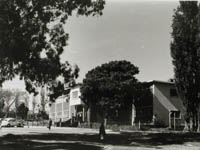
There were, however, many connections between these organizations, and people sometimes belonged to several. The BPC had some of its members59 teaching at Soweto schools. It was their "duty … to conscientize students with regard to the struggle for liberation … in the context of Black Consciousness which is an attempt to rid Black people of psychological and physical oppression by means of collective bargaining,"60 thus providing the link between the BPC and SASM in the schools. There were a few principals like L. M. Mathabathe at Morris Isaacson High School,61 "an approachable man, unlike most of the principals," who was "well-disposed" toward Black Consciousness, making "himself easily available for service" to the community. When he was approached by SASO to help with a plan for Free University Service, an alternative higher-education system, "he availed himself without inhibition, as most other people usually are afraid because they are civil servants and they do not want to be involved too much in community work," and "they are afraid that the government might not like their participation in activities which have an aura of Black Consciousness." Notwithstanding his support for the students, Mathabathe was not, Aubrey Mokoena said, involved in the unrest.62
Although the SSRC was an organization in its own right, planning the second demonstration to demand the release of detainees for August 4, 1976, the students also called on the BPA (Black Parents' Association) to represent them and present a memorandum they had drawn up, which set out the students' minimum demands and was addressed to the minister of police. The BPA (Black Parents' Association) in turn asked the SSRC to draw up and publish in the newspapers a statement calling off the "riots" and asking students to go back to school. This statement appeared in the press on August 5, 1976.
115The links between any of these organizations and the ANC or PAC, both of them liberation movements in exile, have always been debated. Dr. Nthatho Motlana pointed to the continuous "awful schism between the PAC, the Black Consciousness Movement and the ANC" as reason for the founding of the Black Parents' Association: "We needed to form an organization that could bridge the gap."63
It was the BPA that intervened on August 4 to prevent confrontation between the students and the police during the march on Johannesburg. Aubrey Mokoena, who was arrested on August 14 and taken to John Vorster Square police station,64 was one of its members. The BPA was rendered inactive by his arrest, along with that of three of its members—Motlana, Winnie Mandela, and Kenneth Rachidi—and by the banning of public meetings. Until then,
this body was given recognition by all Black organisations. It gained support and respectability because it was an umbrella body and adult mouthpiece during the riots. What gave it prominence and advertisement was the mass funeral that it planned to hold the 3rd July and the task it set itself to receive relief funds for the riot victims. This gave it credibility. The students had a lot of respect and confidence in the BPA, particularly that their organization, SASM, was a constituent body of the BPA, hence the SSRC [Soweto Students' Representative Council] submitted its memorandum of grievances to the BPA for representation to the Minister [of Police].65 [Emphasis added.]
Winnie Mandela bridged not only the gap between the generations but also that between the resistance organizations. She was "not only … actively involved in the BPA, she was also a leader of the ANC."66 As such she was the obvious target for investigations by the (security) police, and her links to students were closely scrutinized, as is described in the essay, "Winnie Mandela—Youth Leader?"
[Gilbey:] Winnie had embraced Black Consciousness wholeheartedly. Black pride was a cause she could sincerely identify with. The trial she had attended following her unbanning was that of twelve student leaders whom she described as "a source of real inspiration and the leaders of tomorrow" [Cape Times, 3 October 1975], and she subsequently met and had talks with Steve Biko and other student leaders. As a result she was identified as a Black Consciousness activist by the government, although her position did not reflect that of the ANC, which continued to be a multi-racial concern. In her reaction to the energy of Black Consciousness she may not have reflected the position of the ANC's imprisoned and exiled leaders but she was very much in step with the feeling spreading among black youth across the country.67120
[Motlana:] The youth, many of whom came under the influence of Black Consciousness, related very well to Winnie Mandela; they never had problems accepting Winnie's leadership, she transcends these differences. They go to her from all over. So in the BPA (Black Parents' Association) we needed the kind of role Winnie can play, her ability to bridge the gap between the youth and the adults and the different ideological factions.68
One of the reasons for what Motlana had called the "awful schism" was without a doubt the fact of exile, the physical and experiential distance it had created between the PAC and the ANC, and the new generation of student activists, quite aside from historic differences between the ANC and the PAC. Two important issues have shaped the debate about the roles and standing of these organizations in 1976 as well as in the period that followed, as the ANC took the experience of the students during 1976 and sought to embrace it—or to appropriate it into the narrative of its own, and now dominant, liberation history. The first issue, about the differences between the Black Consciousness Movement and the ANC, was centered on the somewhat narrow idea that the Black Consciousness Movement espoused a clear antiwhite philosophy while the ANC continued to be a multiracial organization. The other issue was the question of how much of a hand the ANC had had in the organization and planning of the uprising on June 16. Ironically, this too became the major preoccupation of the South African government, which was to go to great lengths to try to prove these connections, as is shown in Chapter 3, Part 3: "Confronting Each Other: The ANC and the Cillié Commission."
Sam: "...I already had a clear vision of what was taking place." Sam: "We had materials at
home, books at home, that my brother would tell me "you'd better read these books," and I would read such books. [...] I will remember
books such as "Roots," I read it through, at my very earliest age. Some few other that I read, the pamphlets from the organization,
about the life of Mandela, his struggle, the Rivonia trial. I read those things before I went to my secondary school. So when I went
to my secondary school, I already had a clear vision of what was taking place."
There is little doubt that some students, especially those who had studied and read a lot and who had engaged with the history of struggle
in the country, would have had some knowledge of the ANC, its ideals, leaders, and political history. And there is little doubt that, for
some, connections had been made. Sam Mashaba remembered being quite aware of the role of the ANC in the history of resistance.
(tertiary-level) institutions (universities, teacher-training colleges, etc.) and students at high schools and other secondary schools.
Zakes: "The ANC, was ours." Zakes: "The ANC, was ours. You know, I grew up within the ANC.
A differently father organization, it gives you … not to hate, the politics of hatred, our politics was not based on the question of race,
or to hate a certain racial group. No. It was based on the apartheid system, to understand correctly what is apartheid. And in the end what
will result in this system itself to be checked, for future generations and all this … So that one could be brought in a position to look
at it in a broader way, not narrow.
So this, and the question of recruitment. To teach how to recruit for the ANC. So it was, that time it was still a build-up to 1976. By
then already, we have penetrated, even the student organizations. Because if you remember, there was SASO, there was SASM, which was through
ANC … we have our people within the student organisations, so that [telephone] …
We were still at the point where I was telling you about the cells, how they functioned, the aims and objectives … The recruitment,
if you remember, started before the uprising. By the time the uprising came into being, already most of some of the youth, had left the
country… to Botswana, they started there […] By February/March there was already a movement already."
Zakes Molotsi's was a decidedly ANC point of view, from which it was assumed that the ANC
had been quite present in the townships, that they had begun recruiting students before the uprising, and that its members had penetrated the
student organizations. As a member of the youth, he did, however, recognize the weakness and ineffectiveness of both the ANC and the PAC, and
he understood the need for a common cause and purpose despite the differences among them.
Zakes: "there was no tension, on the ground." Zakes: "No, there was none [tension]-that time, it
was a close[d] society. There was no ANC, there was no PAC. The organization, these organizations, they existed underground, but above the
ground level, they were really not there, because it was difficult to talk about these organizations. You could not even refer to them by
names in '76. So that is why it was a question of-everybody was just associating with any other [unclear] as long as we all agree. That's
why even now, it's … so important even now that people should accept, my belief, that we should accept, yes, you are right to believe
in whatever way you want to. As long as we don't take those differences physically. Inside here they existed, but it was not about that. So
it was not easy to trace that this particular person belongs to the ANC, this one belongs to the PAC, this one belongs to AZAPO. It was very
difficult to do that.
[…] there was no tension, on the ground."
The fact is that the students found themselves very much on their own in 1976 with little to hope from the exiled liberation movements or
from the senior movements like SASO and the BPC (Black People's Convention),
whose leadership had already been weakened in the years immediately prior to 1976, and whose remaining leaders, like Kenneth Rachidi, Tom Manthata,
and Aubrey Mokoena, were quickly detained by the authorities.69 They organized themselves as best
they could, defined and redefined their institutional identities as needed, and developed multiple strategies and communication networks between
and within their organizations, all in defiance of repeated efforts by the authorities to smash them.
Counter-memories
The understanding, and probably the reality, of who had organized the marches, who had started the protests, when they had started, who "owned" the movement or who was responsible for certain actions and processes, how much planning there had been and by whom and when—all this depended very much on the position of the speaker at the time and on the act of remembering the events of Soweto, remembering them in the time of the present. None of the lines that divided students and organizations were static. Students straddled different organizations and negotiated the difficult terrain of leadership, planning, and organization as the ever changing situation dictated. Some boundaries were eventually blurred by the solidarity engendered by severe police action, and they in turn gave way to new differences and divisions among those who participated in the uprising. Neither the chain of command nor the ownership of the uprising were ever completely clear, and it is difficult, if not impossible, to impose order on the way the events or different historical actors in Soweto (and later in other parts of the country) interacted with each other, what the direction of influence or leadership might have been. Historical accounts have tended to focus on the leadership and the organizational structures and have deflected attention from those who believe they began it all, perhaps in smaller and less organized ways, by protesting Afrikaans in their schools long before the student movements articulated their own responses to a ruling that did not immediately affect them, and long before those movements organized themselves to express their solidarity and, in the process, to a certain extent, imposed their leadership on their younger counterparts in the schools.
Sifiso Ndlovu: "Ours was one of the schools chosen" Sifiso Ndlovu: "Ours [Phefeni Junior Secondary School] was one of the schools chosen where the pilot program of this directive was to be implemented." Sifiso Ndlovu] In a small but important book published in 1998,70 Sifiso Ndlovu, and his informants, Njabulo Nkonyane and Paul Ndaba, introduced an account according to which the impetus for the march and for the sustained resistance against Afrikaans came not from the high schools (senior secondary schools) but from the junior secondary schools.71 The evidence seems to support this, and it is clear that students at several different schools most affected by the new Afrikaans ruling were the first to oppose it, clashing with teachers, principals, and eventually the police.72
125Already in late May 1976, however, at the General Student Council meeting of the high-school student organization SASM (South African Students' Movement)73, at St. Ansgars, the executive adopted a resolution on the issue of the "Afrikaans Strike," thus not only recognizing the relevance of the issue but also taking an active stand on it. It noted:
1) The strikes that have been going on in Soweto against Afrikaans being used as the medium of instruction.
2) It's national implications to Black people in this country.
Then resolves:
1) To fully pledge on solidarity with the schools on strike against
2) To actively sympathize with those schools on strike.74
The students had decided at their subsequent meeting, on June 13, that they would march by "any route leading to Phefeni Junior Secondary School" from schools all over Soweto to demonstrate their solidarity with those schools and students that had already been on strike and protesting the new imposition of the Afrikaans ruling.
The march on the morning of June 16 took students out of their classrooms and had them moving together along the streets of Soweto toward a common goal. It was a process that gathered immense momentum as it unfolded, and it produced a sense of togetherness and solidarity while simultaneously creating an almost physical connection between schools along the route, giving spatial dimension to the sense of belonging. The students moved through Soweto roughly in three columns: one, from Morris Isaacson and led by Tsietsi Mashinini, Lazarus Mphahlele, and Mefi [Murphey] Morobe, passed Thesele Junior Secondary School in Mofolo and the Sizwe Stores; another, from Naledi Senior Secondary School, was led by David Kutumela and Tebello Motapanyane and gathered up students from Thomas Mofolo Junior Secondary School and Moletsane Junior Secondary School; a third column came from Sekano-Ntoane Senior Secondary School, collecting students from Senoane Junior Secondary School, and it moved along Potchefstroom Road, where they were joined by students from Ibhongo Junior Secondary School.
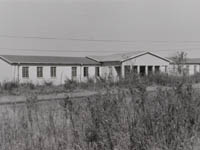
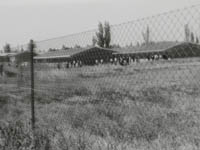
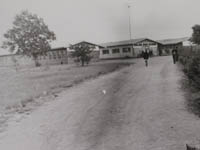
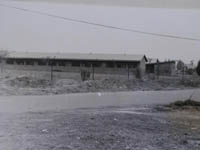
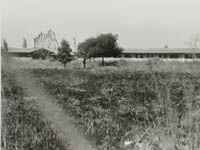
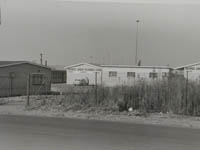
Once gathered at Phefeni Junior Secondary School, Tsietsi Mashinini was going "to address the students on the Afrikaans issue, telling them why other schools had to show their solidarity with the schools that were on strike against Afrikaans being used as a medium of instruction and also that the students should not go back to school, not until the demand against Afrikaans has been met."75
130By all accounts, it seems, Seth Mazibuko was the link between the affected students from junior secondary schools and the less affected, but possibly politically more organized, students in the high schools, as he was later to be the person who linked the student movement in the city to that in the countryside:
Seth … was given the mandate to drum up support for us from other junior secondary schools who were also affected by this issue… We would try to meet but we had problems from the police… Other schools did not have the problem. They would go to school and discuss issues. This is what happened at Morris Isaacson, and Naledi High and all other high schools…76
Seth Mazibuko described how pamphlets, "inviting the pupils to attend the SASM meeting at the DOCC Hall, Soweto, on 13.6.1976 at 2 P.M.," were distributed at Phefeni Junior Secondary School on June 11, 1976 He did not himself see who was distributing the pamphlets at his school but received one from another student there.
Ndlovu in Counter-memories points to differences among students along a line that divided high-school students from junior secondary schoolchildren.77 It was a line that closely paralleled the divide between those who would immediately be affected by the new imposition of the Afrikaans ruling and those, who by virtue of their more senior standing, were not directly affected by it. (See essays: Setting the Stage and The Schools.) It is a divide that Seth Mazibuko also echoed:
We [Phefeni Junior Secondary School] were just separated by a fence from Orlando West High, and definitely, Orlando West High being our senior school, you would imagine that now we would have gone, maybe, to seek for help there, or direction, but they didn't know that there was something happening … just—you know—a fence away. Pretoria didn't know about it, Tanzania, where the ANC was, I doubt if it knew about it78.135
Whether separated by a fence or by the thousands of miles of exile, the gap between different groups seemed infinite sometimes. Given the government's propensity to exploit any schisms or tensions among or between the students or between organizations that represented them, even to use witnesses against each other, it was not surprising that the testimonies of participants that were recorded by the Cillié Commission were filled with examples of these tensions and differences.
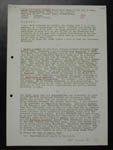
Related essay:
Layers of Meaning—Testimonies in Time
Zweli Sizane, a senior member of SASM, wanted to stop the demonstrations
because he was "afraid that most students would get killed." Mokoena, toward whom he had expressed his doubts, had argued that he should
not try to stop the students because he might be labeled a sellout.79 Nevertheless, on the morning
of the planned demonstrations, Sizane, together with two journalists, tried to keep track of the various groups of students marching toward
Phefeni Junior Secondary School (aka Orlando West Junior Secondary School). Stopped at the school before any of the groups had arrived, they
found only Phefeni students in the yard. The students at Orlando West Senior Secondary School next door were in class writing their half-yearly
examinations. Again, what struck a note of discord was the proposal to use force to bring other students on board:
He [Tsietsi Mashinini] also told us that if Orlando Senior Secondary School was not present at eleven a.m. at the Phefeni Junior Secondary School, then he was to tell the students to march further to Orlando Senior Secondary School, assemble outside the Orlando Stadium and from there Orlando Senior Secondary students would be fetched. Force would have to be used if they are reluctant, for Orlando Senior Secondary was believed, from the students from Orlando Senior that were present at the meeting on Sunday, to be uncooperative.80
The participants and witnesses to the uprising did not all speak with the same voice. The evidence consistently points to a division among the students. Those who were active and already organized in SASM and at high schools that already had a tradition of political activism (e.g., Morris Isaacson, with a liberal principal and the influence and presence of Tiro) were distinguished from those who were active on the Afrikaans issue (e.g., Phefeni Junior Secondary School) but not affiliated to an organization. SASM provided the forum when students did begin to organize, although it was by no means the prime mover behind the uprising:
At the DOCC on June 13th … this is when and where plans were made for a three-day boycott and demonstration on June 16. SASM did not really control the meeting, it called it, it convened it … it created the platform.140
[…]
So we came together at the DOCC and it was at this meeting that we resolved to have a peaceful demonstration by all students in Soweto.81
It is a division emphasized by Ndlovu and the voices he documents, but it was further supported by a curious separation in the later narratives about Soweto, which have as the target of the march Orlando West High School and, alternatively, Phefeni Junior Secondary School—"just separated by a fence"82 from one another. The close physical proximity of the two schools, even though one was a high school and the other a junior secondary school, may explain the apparent difficulty of distinguishing between them:
[O]ur preparation was such that we saw ourselves on this day marching from all different points of Soweto, towards Orlando West high school, where one of the junior secondary schools which had been longest in boycotting classes around Afrikaans issue was located. And the idea was that we would be marching towards that point as a way in which we are going to pledge our solidarity with that secondary school."83
Murphy Morobe , speaking on Radio 702 on June 16, 1993, was also explicit about the distinction between junior and senior students, and he emphasized leadership by the latter:
[A]lmost all of the high schools in Soweto marched. And I think that one, one, when one talks about numbers it is difficult to estimate, but it literally ran into the thousands because there was no high school that did not go out… [T]he message of the issue was exemplified when almost all the students came out. Even at primary schools. We tried our best to discourage primary school children at that point from joining us in the march, and we actually arranged such that … in fact they could be advised to be dispersed early and to not join the march.
[…]
We were worried. I think that there was a concern, we wanted to restrict the activities largely to high school students, those who were directly affected by this. And also, in fact, the degree of responsibility that in fact one could place on high school students was different from what you could place on primary school children. So, we had to make … we tried to make that distinction.84 (See Chapter 5: "Afrikaans".)
The term student was itself contested and confusing. Sifiso Ndlovu:
145One has to also point out the problematic manner in which the terms "student" or "pupil" are used when discussing the origins of the uprisings. These terms are used simplistically, in a way that does not highlight and take into cognisance [sic] the various differences among us. We were not a homogenous group.85
This was especially true where the language was caught up in the government's attempts to discredit the youth, define the participants in accordance with its own agendas and assumptions about the capabilities and capacities of young people and adults, or defer responsibility to outside, older agitators—sometimes with arguments that bordered on the ridiculous:
Cillié:What is a student, according to the definition of SASO?Mokoena:A student is one who is in an academic pursuit in any field of study at an institution of higher learning… that is post-matric.
[…]Cillié:Mashinini was a scholar at Morris Isaacson School… Now what did you call him? A student or a scholar?Mokoena:Well, we called him a student. The word student was rather used loosely, except that in our constitution [SASO] we specify that it … referred to those who are studying in post-matriculation courses.Cillié:So you say you have used the word "student" loosely?Mokoena:Yes, even the newspapers use the word loosely and they do not make a difference, a strict difference between high school student and university student.Cillié:Well, it is a high school scholar surely.Mokoena:Yes, arguably so.Cillié:I do not understand why you say arguably so. It is so, isn't it?Mokoena:Well, I suppose the press media have influenced people to use the word "student" commonly. If you read a newspaper they always talk of students have gone back to school, students are not going back to school and so on. They do not say scholars. Another sense in which the word "scholar" is used is at the high university level where you say professor so and so is a scholar, he is an outstanding scholar in this discipline.Cillié:No, no, you know that is not the scholar I am speaking of. Were you ever at a university?Mokoena:Yes, I was.Cillié:Where?Mokoena:At Turfloop.Cillié:There you were a student.Mokoena:Quite so.Cillié:When did you leave there?Mokoena:In 1972.[…]
Cillié:Now since then you were no longer a student because you were not at a university.Mokoena:No, but I was a student because I was studying with the University of South Africa.[…]
Cillié:Were you still during 1976 a registered student of the University of South Africa?Mokoena:Definitely.Cillié:As such did that admit you to membership of SASO?Mokoena:Yes…Cillié:People who were at different schools, for example the Morris Isaacson School, they were strictly speaking scholars.Mokoena:Yes.Cillié:Loosely they were referred to as students.Mokoena:Yes, quite so.Cillié:They would be entitled, most, to associate membership of SASO.86Even among the "students" themselves, their status and the terminology associated with it were complicated, especially where commitment to and engagement with the struggle against the Afrikaans-language issue and questions of who the architects of organized action had been were at stake. Like the different paths that led to Phefeni Junior Secondary School, the experiences and actions of ordinary students caught up in or creating the events of that day were vastly different, depending on many factors and realities. As Ndlovu, himself a 14-year-old student at Phefeni Junior Secondary School in 1976, had pointed out above, some students had never heard of or joined a student movement:87
Students from the various high schools in Soweto were not at first interested in our plight and struggle, as they were using English as a medium of instruction. They carried on with their studies as if nothing was happening during the formative, crucial days leading to the uprisings. I remember that in my school the senior students, Form Three (Std Eights), were both aloof and dismissive towards us. The Form Four and Five students from our high school and our neighbours, Orlando West High (popularly known as Matseke) were equally uninterested. The majority of the senior students were very reactionary and perceived us as young upstarts and delinquents who were interfering and disturbing "normal" schooling. Therefore like the Tsietsis of those early days, they simply went on with their studies in March, April, May and early June 1976 without questioning the status quo.88The Confrontation
150 When the police fired on the students and killed Hector Pieterson and Hastings Ndlovu, their actions produced a volatile mixture of fear and anger, a sense of outrage that did more to unite the students than to disperse the crowd. This fear and anger, and a sense of powerlessness against police bullets, combined into a single-minded will among students to retaliate against anything that might represent the deadly force of the police. The vantage point from inside the crowd and the voices of students reveal the complexity of new situations, even the inconsistencies and contradictions of student reactions and actions. They also reveal the high drama of the moment of confrontation, the (quick ability for) adaptation to new situations, and the sense of solidarity and common purpose, even in destruction.
From various directions, students had been marching toward the gathering point, agreed on in advance, at the Orlando West schools, and not all were present at the first deadly moment of confrontation when Hector Pieterson was killed. Montsisi described the calm of the group he was with, noting that they had passed, without incident, a white man standing outside the municipality office:
When we arrived at Morris Isaacson in White City it was quite clear that the students had left, that is all the students had actually moved to Phuti. So this other contingent of students was running a little bit late. Now we moved past Morris Isaacson. On the right was the Municipality office. There was a White man standing outside. We passed and went past right up to Mafulo Park [Mofolo]. Now at Mafulo Park we met quite a number of students who were actually coming from Orlando West. Tsietsi was actually leading them together with Murphy and some of the other student activists. Now we were still en route to Orlando West when they were actually coming back from Orlando West after the shooting had taken place. So Tsietsi explained to the students what had actually happened.89In the group coming from Orlando West, though, it was, as Murphy Morobe put it, pandemonium. "There was fear, there was crying,"90 students were "coughing from the effects of teargas."91 "It was almost as if these people had come from a battlefield, not a demonstration," one student said. Some students were bleeding, others had torn their uniforms and gym dresses where they had clambered over fences.92
It was a volatile mix and for the first time, in the voice of one of its participants, we encounter an explanation for what happened in those dreadful moments after the first shooting. According to plan, the different high schools—Morris Isaacson, Sekano Ntoane,93 Naledi High, Meadowlands High, and Madibane—had been given specific responsibility to be the leaders of the different marches, which were to proceed from various directions in Soweto and converge in front of Orlando West High School and Phefeni [Orlando West] Junior Secondary School. "So it was that when we arrived at Orlando West, we all arrived at different times."94
155Now we have two contingents of students, those who were angry who were not yet shot at, who wanted to meet the police head-on, and those who were injured, some of whom were limping, some of whom were bleeding, who were now merged together going back to Morris Isaacson. Now the students we were leading, who had come from the western part of Soweto demanded from us that they also wanted to go to Orlando.95Even those students who clearly were in positions of leadership found they were unable to control the march once the fury of the students had been unleashed. Tsietsi Mashinini jumped on top of a tractor that workers had abandoned next to the road. He told students that they should disperse and go back home, but "the students refused to disperse saying if some of them have already been killed then the police should come and kill all of them."96 Zweli Sizane had a similar experience:
We drove up towards the Uncle Tom's Hall. I was peeping through the window telling students to disperse before more were killed… They refused to disperse. Next to Phefeni Station I saw Tebello Motapanyane and told him to tell students that they should disperse and further that they should not get back to school not until Afrikaans as a medium of instruction was scrapped off. He, Tebello Motapanyane, then went on telling students to disperse, but the students did not show any signs of wanting to disperse. They … looked bitter and very much emotional.97Many years later, Sibongile Mkhabela remembered that students in 1976, expecting the police to still respect human life, thought they would foresresourcebox tall violence by committing to a peaceful march.
I must say there was an awareness that things may go wrong. So one kind of anticipated violence. But because we anticipated it, and because at that time [!] respect for human life was so paramount [the implication being that, with increasing violence, that respect has disappeared], we actually resolved, I remember at the meeting on June the 13th, at the DOCC, at the student body, we resolved that we would be as peaceful as possible.98160A little later, after Nat Serache, Sizane, Tugwana, and Morobe had counted 22 police cars parked near the Orlando bridge and had seen the police riot vans moving toward Orlando East township, they renewed their efforts to get the students off the streets:
At Orlando West I hung on the door of the car with one foot on the doorstep, and shouted to the students to disperse for as we were driving to the hospital we saw soldiers coming into the townships. Students started running away from the area. They were terrified.99Twenty years later, the description that Zweli Sizane made in his statement to the police was confirmed by Murphy Morobe in his testimony before the Cillié Commission:
After that volley there were a number of students injured and together with a colleague of mine we decided to ask one of the journalists who was in the area, you know, to help us because there was general pandemonium now, you know. We tried to bring back the students, it just did not help. There was fear, there was crying, all of the students were lying, you know, really immortalised [immobilised] on the floor, on the road, etc. So we decided, perhaps, let us try, you know, myself and a colleague, Swele Sizanie [Zweli Sizane] from Orlando East, to use one of the journalists cars to drive to Baragwanath Hospital to try and go and see any of the students who might have been injured because at least we knew that the likely response of the police was to go to the hospital afterwards and detain or arrest some of those who were arrested.We then made our way to Baragwanath to try and see what we could do there, but on the way to Baragwanath we came across an additional convoy of police cars and in armoured cars that were driving down Potchefstroom Road towards Orlando. At that point we decided we have to turn back and go back to Orlando West so that we can warn the other student that we think there is a bigger problem coming. We did our best to try and disperse the students at that time. It did not matter now about meetings or anything, we just were concerned to get students off the road.100165Eventually the leaders of the march succeeded, and "then we were going now back to Morris Isaacson."101 It was an angry and volatile retreat:
When we were returning home now, when we were returning home, the very first bottle store, the beer hall that we went to, it was Phefeni bottle store. In fact, when, when I passed there, people were now starting to loot, it was being thrown with stones like that and then people were now starting to loot, starting to loot. And then when we traveled back home, of course it was very difficult. Here you could hear gunshots, every direction, teargas, you know, even when you jump into a nearby house, you know everything was locked. Because they were also …, you know you could find a house be locked, and then people, right under the bed [laughs], you know, just, if you can just find a safe place for you. But I managed to reach home.102Although initially the demonstration was peaceful and students had no intention of violence, the police actually met them head-on with guns and dogs, causing violence to break out everywhere. On the way back to their schools, students from Tshiawelo, Phiri, Mapetla, Moletsane, and Dlameng attacked municipality offices, delivery trucks, official vehicles, and any government structure they found. Near Phefeni Station, they came across a West Rand Administration Board vehicle that they stoned. Rodney Paul Rammekoa, a 21-year-old student at Naledi High School, had not been involved politically before June 16, and he sounded vulnerable and inexperienced in his testimony before the Cillié Commission, recalling that he threw a stone himself. His words, quickly tempered by regret, reflected a need to come to some understanding of the momentum of the crowd:
I do not have … (inaudible) I really do not know what the cause was. We were led by—the things were happening there, the throwing of many stones might be the one which caused me just to throw a stone. But I only threw one stone there. Then I regretted that.103170Two white men became the targets of the students:
Now on our way to Morris Isaacson we met a van, it was a green bakkie, one of these Municipality vans, it was driven by a White man. That is when violence started with our group. Mostly the girls were in the forefront. I have never seen so many stones in my life raining on a car or on a target. I don't know where most of the stones came from. In no time the bakkie had no windows. And the student girls themselves actually struggled and fought amongst each other to get hold of the White man who was inside the car. They dragged him out. They pelted him with stones, with bottles, with their shoes as they were screaming. There was a young boy who was also looking for a way through to the White man. Finally when they made space for him he produced a knife and he stabbed a number of times in the chest of the White man. I turned and we went back to Morris Isaacson. I am not quite sure what happened to the White man. He was left down there.Now we moved and as we passed the Municipal office the students remembered that there was a White man when they passed at the door of the office. Now unfortunately this was Dr. Edelstein and the students went for him. They stoned him and so on and they burnt the office and they threw him inside the office, burning. I only heard later about what happened to him.So the Commission should note that when we passed the Municipal office [the first time] with the White man standing outside, he was an ordinary person to us, but when we came back he was an enemy.104Explanations for the chain of events that led to such violence and the subsequent fury that engulfed the townships have been diverse and contrary. They have rarely included the point of view of those who were there. Few participants were officially heard at the time, either by the commission that led the inquiry into the uprising or in other discursive spaces where their stories could have been told without fear of retribution from the police. As a result, there have remained many aspects of the uprising—reflected, for example, in the story of the deaths of Esterhuizen and Edelstein, the two white people who died in Soweto on June 16—that eluded explanation or were difficult to recreate with accuracy despite their having been investigated by the courts and having excited the historical imagination for many years.105
By this point the crowd was extremely explosive and—the inside view reveals—also dangerous, on occasion, to participants themselves. When Zweli Sizane tried to stop students from looting a bakery van, "one student who was wearing a Sekano-Ntoane blazer … pulled out a knife, wanting to stab me." Another student from Morris Isaacson, however, intervened just in time and "told the other student not to touch me for I was a leader of SASM."
 Original police report, Lieutenant Colonel Keingeld.175
Original police report, Lieutenant Colonel Keingeld.175It is also clear from this that not all the student leaders were well known, not even among themselves, and that not all of the large number of students on the streets that day could be or were being directed either by SASM or the Action Committee.106 At 7:30 P.M. that evening, on their way to Dr. Matlhare's office, where the Soweto Parents' Association (SPA) had hastily convened a meeting to hear from the students what had happened, the student leaders (Mokoena, Mashinini, Morobe, Sizane, and Kutumela) were twice "stopped by a group of boys who were wielding pangas," but they were allowed to pass when the boys recognized Tsietsi Mashinini. "Aubrey Mokoena sounded the hooter of his car whilst we shouted 'Power' back at them, they demanded money which we gave them and they then let us pass."107
During the confrontation, the police used tear gas to disperse the crowds and were baffled by the students' reaction. (See: Chapter 2, "The Narrative" on the first use of teargas.)
Ek het besluit om nou die traanrookgranate tussen die skare te gooi. Ek het drie granate na die skare geslinger in 'n poging om die aanval af te weer en hulle uitmekaar te dryf. As gevolg van die oorverdowende lawaai het ek geen bevele gegee nie maar het gemerk dat van die ander lede ook traanrookgranate tussen die skare werp. Die traanrook het die uitwerking gehad dat die skare vir 'n oomblik gestuit het. Van die skare het van die granate opgetel en na ons teruggegooi. Die traanrook het geen noemenswaardige uitwerking op die skare gehad nie en 'n verdere aanval met klippe was nou geloods.I decided to now throw tear-gas grenades into the crowds. I threw three grenades at the crowds in an attempt to counter the attack and to disperse them. As a result of the ear-splitting noise I gave no orders, but I noticed that other officers also threw teargas grenades into the crowds. The tear gas had the effect that the crowd hesitated for a moment. Someone in the crowd picked up some of the grenades and threw them back at us. The teargas had no discernible effect on the crowd and they now launched another attack with stones.108What's this?180
From the students' point of view, these encounters looked different. Few had ever experienced tear gas before. Lilli, recalling the May confrontation between students and police at Naledi High School, noted that "that was the first time that we heard of a thing called tear gas, that the whole location was tear-gassed."109 In some cases tear-gas canisters were thrown at students, but police also used gas pistols. It sounded like guns going off.[At] that time what I experienced was the teargas which was being used by the police. At some stage when I heard what I can say are shots.]
[…]
[I]t was in the process, because when teargas is fired I think it gives the same sound as of bullets. [Morobe, 1977]110
I think there was one teargas canister that was lobbed and it was the first time that many of us had experience of teargas. Even a shot from a teargas canister, if you are faced with a gun pointing at you, it is still a gun and a shot is fired at you and some of the canisters hit some of the students. There was a little pandemonium and we tried to rally the students not to panic. [Morobe, 1996]111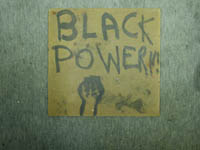 Poster: Black Power!
Poster: Black Power!These encounters quickly became commonplace in confrontations with the police, and the students soon found ways to deal with the unfamiliar. News of the shared experience of tear gas and of the police firing at them was spread in disbelieving, hastily transmitted messages from person to person to, and those who had not been present in the first moments of violence soon informed. The defiantly raised fist and the words Black Power on everybody's lips quickly defined the group and made clear who belonged and who did not.
So that time, everybody now, we start to organize. As I have mentioned, the group I belonged to. We started to teach people how to make petrol bombs and all these things, when the gas, the teargas, how to counter it.112On August 4, 1976, Martin Mahlaba, a reporter for the Rand Daily Mail, reported in an article on the march to downtown Johannesburg that "[m]others and older women among the marchers carried water in containers. After each teargas attack, they washed the eyes of children in the march."113
185[A]nd then the teargas shot out.
[…]
Everyone was watching the canisters go up, watching to see where they fell and quick as anything the women around were organized. Some tore off their doeks [Afrikaans for headscarves], others had buckets of water. As the canisters fell they were doused with water. They pulled nappies [diapers], clothes off the lines, dipping them in water and throwing them to the children to cover their noses.114A similar description for Soweto comes from Mbulelo Mzamane, who wrote this story to, in his words, "preserve the memory of the events of 16 June 1976, as seen from the inside":
The police then used teargas to try and disperse the students. Far from scattering about in a disorganised fashion, the students soon developed a technique for containing the teargas. Armed with cloths and buckets of water requisitioned from nearby houses, they covered the canisters with wet cloths as soon as they hit the ground. In this way many of the canisters were prevented from exploding.115Whether or not schoolchildren figured out this technique immediately—Mzamane places this description directly into the first confrontation between them and the police—it certainly served as an interesting foil to the deliberations of the baffled police.
Black Consciousness
In the absence of the institutional and personal leadership of the historic liberation movements such as the ANC and PAC, this was the time of Black Consciousness. While its influence on individual participants varied during these heady days, "a philosophy that attempts to rid Black people of physical as well as psychological oppression … [was] bringing the Black people together" in opposition "to the act of racism practised by the Whites."116 Black Consciousness thus delivered the values and a series of practices that provided the intellectual and practical context within which students could identify themselves: fearlessness, a sense of self, recognition of each person's potential, a common humanity. In practical terms, Black Consciousness tried to diversify leadership, rotating leaders frequently and rendering them indistinguishable from the rest of the group:
190This was not only in preparation for the inevitable moment when the state would single people out to be banned, banished or arrested, but also an acknowledgement that multiple skills are the most productive.117This concept of leadership also foresresourcebox talled power politics and a reification of hierarchy within the student movement. Biko believed strongly that diversity and difference strengthened the common purpose of all of those fighting apartheid. Inspired by Paulo Freire's Pedagogy of the Oppressed to recognize teaching as a political act inseparable from learning, Biko and other members of the Black Consciousness Movement crisscrossed South Africa, listening everywhere to the experiences and problems of others and teaching them about history, about the struggle against apartheid in South Africa, about racism elsewhere, and reminding them of their own abilities to make contributions to the country and of the importance and relevance of their role and their culture. In their travels in rural areas, townships, towns, and suburbs, they made use of social and cultural networks, church groups, debating societies, meetings, teach-ins, conferences and seminars, trade unions, even shebeens. The long road trips between Port Elizabeth, Cape Town, Durban, and Johannesburg were long journeys of personal analysis and political discussion, tying together activists and communities in an invisible web across the vast landscape of South Africa. They also created opportunities to visit those who had been banished to remote rural areas, thus turning the government's efforts at division and silencing into new opportunities of teaching, learning, and community building.
Sam: "...as a black person you have to stand for your rights, you have to know that you are not inferior, to be confident of yourself, to believe that you are a person, there is something that you can contribute meaningfully and equally" Sam: "I was the chairman of the [Black People's Convention, BPC] branch. […] … generally speaking I remember it … [made] us aware of the injustices of the country. You see, it was an education, it was an educational program, which would conscientize us, to make us aware of the ills that we were suffering under the apartheid rules, which would cover the history, historical background of what the white regime, the apartheid regime did on arriving in South Africa, and also what they did to our fathers who were migrant laborers, and what they did, the struggle against apartheid, also would be one-faced [?], and this would also include such things how our political leaders started to fight the white people. We had one church [?] leader, who was in the country, a co-founder of the PAC, Mr. Matsunje [?] who has passed away about three, four years or five ago. And he was very much active also in organizing us. His son now is the chairman of the regional branch in Soweto of the PAC. They would tell us what should we do, as a black person you have to stand for your rights, you have to know that you are not inferior, to be confident of yourself, to believe that you are a person, there is something that you can contribute meaningfully and equally to a white person's performance in the country. It was a conscientizing program, an educational program. We didn't cover much really about violence. They wouldn't tell us such things. But they would tell us that it is our right to disrupt the program of the school, if we realized that it is a program that was enhancing the thoughts of the oppressor." For Sam Mashaba, the teachings of Black Consciousness were important, and the sensitization, or conscientization, of students to the oppression that surrounded them was an important step toward liberation. Not everybody felt strongly about Black Consciousness, and many young people had only a simple understanding of the different political philosophies and organizations at the time:
I knew there was SASO and I knew that there was SASM but I did not belong to any of them. I had a vague idea [about politics then]. I knew Steve Biko was a leader but beyond that I did not know… I did not know about BC [Black Consciousness] for instance, I mean as a loaded term that it turns out to be, and I mean I knew very little at that stage… I knew Mandela was a leader in prison at that time. I knew rudimentary things like that… We were aware what was happening at PJSS [Phefeni Junior Secondary School class boycotts]. We sympathized at a far-off level, not at a level of taking part (given that we were not affected).118It is impossible to fully comprehend a past consciousness and reconstruct or reproduce it, but the evidence is unambiguous and abundant that some form or expression of Black Consciousness, as a philosophy and an emerging political strategy, was central to people's political understanding and life. Some had joined Black Consciousness organizations, others had heard some of the speeches. The prevalence of Black Consciousness ideas at this time was also reflected in the way people overlapped in organizations, with Zweli Sizane, the national organizing secretary of SASM (South African Students' Movement) reading the speech for the Reverend Ngakane, and Aubrey Mokoena, as a member of the BPC (Black People's Convention), giving a speech about Black Consciousness at the SASM General Students held at St. Ansgars at Roodepoort on May 28-30, 1976:
195The struggle means a determined effort to bring about change, political change in the country.
[…]
It contains the facet of revolution, but then revolution also has many connotations. The one that I think of is change. I want to qualify revolution by using the word "political change"—phrase "political change," that is in keeping with the philosophy of Black Consciousness.At that meeting, Mokoena gave a speech about Black Consciousness, which he summarized in his own words for the Commission:
I said that Black Consciousness is a philosophy that attempts to rid Black people of psychological as well as physical oppression. Psychological oppression refers to the de-humanisation of the Black man and the erosion of his values. Physical oppression refers to the deprivation of land and allocation of only 13% thereof. Black Consciousness defines Black people as those who are politically, socially, economically and otherwise discriminated against. We believe that South Africa is a country in which Black and Whites live and will continue to live. One is either part of the problem or part of the solution and that the Whites by privileges accorded to them are part of the problem and that in all matters pertaining to the Black man's struggle, the Whites must be excluded. The Black people must close their ranks and build solidarity among themselves. Black Consciousness is not anti-Whitism, that after realizing Black solidarity, the Black people will bargain collectively with the White racist regime to bring about change. The ultimate goal is Black majority rule. We reject integration as preached by multi-racial organisations and other liberal institutions, because their conception of integration is the assimilation of a few sophisticated Blacks into the White society with its already existing values and norms. We want to create an open society, an egalitarian one, in which man will not be judged by the colour of his skin, but by merit.During this speech he also raised, probably for the first time, the issue of Afrikaans as a medium of instruction.
I also raised the issue of the Afrikaans as a medium of instruction and urged the students' effort was necessary so as to coordinate resources…119200Tebello Motapanyane, SASM secretary general, who was present at the May meeting, worked with Morobe, Kutumela and Mashinini to organize and invite students in Soweto Schools to come to the meeting, which was held at the DOCC hall on Sunday, June 13. At this meeting a regional branch of SASM for the Transvaal was to be elected. It was also at this meeting that the Action Committee, which would plan the demonstration of June 16, was formed. Mashinini was elected chairman both of the new SASM regional branch and of the Action Committee. All of the students above also became members of the Action Committee, with the exception of Zweli Sizane, who was out of town with Mokoena the weekend of the 13th.
History of SASM
In many schools—even, as I have shown above, as geographically far away as Venda—various organizations such as SASM, BPC, and the BCM (Black Christian Movement) had been active. SASM and the BPC, for many, were far too political, and students involved in the Black Christian Movement were especially reluctant to get involved politically. By 1976, SASM had acquired quite a reputation and had also drawn the attention of the security police. In July 1975, its vice president, Zuzile Cindi, had sought refuge in Botswana after "intense harassments and detentions on him by the Security Police." Nkosiyakhe Masondo was detained on September 15, 1975.120 The foundation of the Action Committee on June 13, 1976, in Soweto, like the foundation of ZOSO (the Zoutpansberg Students' Organization) described earlier, was thus undoubtedly an attempt to appeal to a broader constituency of students, including those who might have been put off by or concerned about joining SASM itself. Needless to say, the organizational and leadership talent still largely came from students who associated with SASM or other Black Consciousness movements. In some senses then, the formation of the SSRC (Soweto Students' Representative Council) and of student representative councils in other regions, was a sleight-of-hand, a "pretext," to make the student movement more inclusive and to make it easier for students who did not want anything to do with SASM or the BPC to join:
Kutumela:Isaac [Tebello] Motapanyane when he told us about the action committee, he said the action committee would be independent from SASM or any other organisations, so that is why we went to Winnie Mandela as an action committee, not under the name of SASM.Advocate:But the action committee was a committee of SASM.Kutumela:The action committee was chosen from SASM.Advocate:Yes.Kutumela:Now which means that the action committee is pulled out from SASM and it was standing on its own.121By October 1977, SASM was in trouble, and the constant detentions, loss of leadership, and threat of police action had taken its toll. Sibongile Mthembu, its general secretary at that point, was detained on August 6, and Zweli Sizane "left the country after being highly wanted by the security police."122 (See documents: Mazibuko letter about detention of SASM leaders page 1 and page 2.)
On October 17, Seth Mazibuko wrote a letter to Father Kearns, a Catholic priest who had been active on behalf of the youth in South Africa, appealing to him "as one who was once being in South Africa" and therefore knows and understands "our kind of living this side":
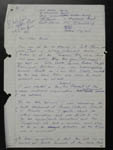 Letter Seth Mazibuko to Father Kearns.205Please Father do explain the way we are being kept or governed this side to the people that side because all what is happening this side it [is] as if we (students), we are provokative [sic] to the police or we don't obey our government.
Letter Seth Mazibuko to Father Kearns.205Please Father do explain the way we are being kept or governed this side to the people that side because all what is happening this side it [is] as if we (students), we are provokative [sic] to the police or we don't obey our government.
So Father my problem is that this side we cannot get funds because of the laws that govern us and that give our people least money. So we can be very happy if you can negotiate that side with some reliable sources about funds, at least a thousand or two can do. Because we find our job going in a very slow pase [pace?] because of finance.123Finally, on October 19, 1977, James Kruger, minister of justice, banned all political organizations—among them SASO, the BPC, SASM, the National Youth Organization, the SSRC, Black Community Programmes, and Zimele Trust—that could be grouped under the Black Consciousness Movement. He also banned the newspaper The World and detained its editor, Percy Qoboza. Beyers Naudé, a prominent white Afrikaner minister who opposed apartheid, and Donald Woods, a white journalist and friend of Steve Biko's, were among the many that were issued with banning orders that effectively silenced them. The bannings came only weeks after the torture, beating, and, ultimately, death in detention of Steve Biko. The heart had gone out of the student movement.
^topIdentity and Representation
When the pace of events threatened to overwhelm the students, many of them having been killed, arrested, or detained, and with police everywhere, the students wanted to explain themselves, and they did so. The students were well aware that, if they wanted the community to continue to support them, they needed to communicate their stories and their political agendas and to show strong leadership. Many documents—among them notes for speeches, pamphlets, press releases, flyers, and newsletters—produced by the students themselves attested to this. Related link:
Archive Inventory As the schools were closed and student organizers were robbed not only of their vital constituency but also of the infrastructure of the classrooms, libraries, assembly halls, and playgrounds—all of which had been so vital to their gatherings and meetings—it became imperative to find new gathering places and new ways of communicating. Many were killed in those first six months of the uprising. Many were detained, and many more fled into exile across the borders into Botswana and Lesotho. They were quickly replaced by others. Each new student leader imposed his mark on the organization while trying to continue the work that had been begun by his predecessors. (See also Chapter 1 "Sources.")The documents produced by students in the year after June 16 reveal how people, and especially young people caught up in events that must at times have seemed overwhelming, thought of themselves. There was evidence that individuals and groups, which were constantly in the process of regrouping as their members were detained or left the country, were in an ongoing process of defining themselves, especially in response to what they conceived of as attacks on their integrity. From the point of view of the historical protagonists of the uprising, terms such as individual, crowd, children, and student needed not simply to be defined in terms of age, number, or indeed degree of maturity or status but to be determined instead by the young people themselves, by their actions, by their definition of themselves vis-â-vis others, as different from others, and possibly from generations that came before them—different from the definitions imposed on them from the outside and by adults, and different because of the particular historical context within which they emerged as a group, shaping itself, defining itself, explaining itself:
[I]t is these students … themselves who were the actual champions of their own struggles, and very young students indeed. They had never heard of the SASM or SASO, nor were they aware of these organisations' role in student politics then. They—in fact, I too, for I was one of them—had not joined any student movement and had not developed intellectually to understand complex theoretical paradigms involving the ANC, PAC, liberation theory or Black Consciousness.124210Sifiso Ndlovu's assessment may be on the extreme side.125 But it is important in its emphasis of how young some of the participant students were and in its assigning credit to the agency of those students who had a critical role in the uprising. If the Black Consciousness Movement and those student organizations and leaders who were more senior had begun articulating a new philosophy, it seems that it was the younger students who had taken things in hand and resolved to act.
Aubrey Dundubele Mokoena, one of the more senior student leaders, had recognized, when he first raised the issue at the SASM conference at St. Ansgars at Roodepoort in May 1976, that it would have to be the students themselves who took action against the imposition of Afrikaans as a medium of instruction. Pushed by Judge Cillié on the question of whether these "efforts" also included demonstrations and riots, he explained that students acted as independent agents in their own right, emphasizing the crucial importance of solidarity and of their being heard directly, not merely through the representations of adults:
By efforts here I do not mean demonstrations, riots, I mean that they should formulate one opinion or way of solving this particular deadlock because this Afrikaans issue was brewing in almost all the schools and the situation was almost becoming helpless and the students were not united to do anything about it and what I envisaged here was for instance if they could elect a representative body which was going to put their point of view to the authority, the relevant authority, because deputations had been sent, but there was not one deputation from the students, there was always a deputation either by the UBC (Urban Bantu Council) or by the teachers, but not the students who are directly affected by this language thing to put clearly the point of view to the relevant authority.[Emphasis added.]126The students took up this call and organized themselves, and on June 15, the day before the planned demonstration, Tebello Motapanyane came and informed Mokoena that the Action Committee had decided at their meeting on June 13, the Sunday before, at the Diocesan Hall that the following day there would be a demonstration against the enforcement of Afrikaans in schools:
215Mokoena:They had already decided to go on with the demonstration on Sunday and they had already informed the schools.
[…]Advocate:The police were likely to intervene because it was an unlawful demonstration?Mokoena:Yes, but as I say that they are the ones who had planned this and they said that it was going to be a peaceful demonstration. [Emphasis added.]127The students (members of the Action Committee, Tsietsi Mashinini, Tebello Motapanyane, David Kutumela, and Murphy Morobe ) informed various reporters of the planned demonstration, and the newspapers the Rand Daily Mail and The Star published news of it in their afternoon editions on June 15, 1976. They informed the schools, prepared placards, and planned the route, which would begin at various points (Naledi High School, Morris Isaacson High School, Orlando West High School, schools from Orlando East) in Soweto and end at Orlando Stadium.
Though the students discussed the possibility of a confrontation with police, Mokoena believed—and advised the Action Committee—that a strong show of solidarity would hold the police at bay. He deliberately did not warn them, believing in their cause and their willpower. In the following exchange with Advocate van Graan and Judge Cillié, the chairman of the Commission, Mokoena recognized the student organizations and leadership as a self-contained, separate presence with its own historical agency and political will:
Mokoena:Motapanyane further said that the police may not tamper with them when they see that they are a big group. I endorsed the idea and pointed out that when the students are a determined column they may not be stopped.
[…]Advocate Van Graan:What did you mean by a determined column? That when they are confronted by the police, they should not listen to any instruction by the police?Mokoena:When I say a determined column, I mean that when they are organised and they are forming one procession and you do not have many of them coming up and acting differently.Van Graan:But surely the word "determination" refers to the nature of the crowd and not to their formation.Mokoena:Yes.Van Graan:What do you exactly mean by the word "determination"?Mokoena:I mean concerted action in as far as their intention was concerned of marching, because they were determined, they had already planned that they were going to march and that their destination was going to be Orlando Stadium.Van Graan:Did you mean by that that they should not let themselves be stopped by the police, that they must determine the procession?Mokoena:No, I did not mean that they must not stop and not [be] stopped by the police, because I did not know what was going to happen?Cillié:You did not know what was going to happen?Mokoena:I did not know how they were going to behave when they were being stopped by the police.Cillié:Well, didn't you think it was necessary to tell them how to behave?Mokoena:Well, this group was not prepared to listen to anybody, I mean, they were firm on their purpose, they had planned this among themselves on the 13th, the selection [action] committee, and my question was just merely incidental, of asking them and they were not …Cillié:[intervenes]: Didn't you say: "But don't you realise that this would be …"Mokoena:that it could not remain peaceful if the orders of the police were not obeyed?Cillié:Yes. Did you say that to them?Mokoena:Well, I could say that.
[…]Cillié:Did you say that to them?Mokoena:No, I did not say that to them. [Emphasis added.]128Mokoena's testimony was unequivocal in its portrayal of the will and determination of the students, as the emphasized sections in the quotes above and below make clear. There was no place for his own ambivalence:
220Van Graan:You say here [in the statement]: I endorsed the idea and pointed out that when the students are a determined column they may not be stopped. Did you by that approve of the idea that they should not let them be stopped by the police?Mokoena:I did not quite approve of the idea, but it was already their intention, so they did not seek any approval, they did not consult me. If they consulted me then I would have given them my opinion, but they were firm on what they were going to do. And they had already informed all the schools, it was just on the eve of what was going to happen, it was just the eve. They had already informed the schools on Monday and on Tuesday. This was just the night before when all was said and done. [Emphasis added.]129A mass meeting to arrange for the funeral for those who had died and to call on the community to contain the situation was planned for Sunday, June 20, at the A.M.E. Church in Orlando West. When the meeting was banned by the chief magistrate of Johannesburg at 1 P.M. that day, Mokoena and Dr. Aaron Matlhare "stopped at the gate of the church and turned people away as they came … on the grounds that the meeting was banned"—"[o]r," as Advocate van Graan said as he pounced on Mokoena in the course of this testimony, "unlawful." Van Graan's efforts to draw a parallel to the course of events on June 16 failed, and Mokoena carefully explained that they did turn people away not because the meeting was "unlawful" but because "it was banned and if we did not stop the people then it would have been unlawful to continue the meeting." Keenly aware of the fine legal difference and implications in the terminology but also of the irony of the situation, he added that "we had to assist in addition to the order banning this."130 Van Graan was relentless:
But if you drew the attention of the people to the fact that it [the meeting] was banned, why didn't you do the same on the night of the 15th when you knew that the demonstration would be unlawful?131Although by now the Soweto community had become aware of the potential for violent confrontation and had experienced first-hand what it meant to confront the police, as was quite obvious and as Mokoena could easily have adduced, he again drew a careful distinction between his own role as outsider, which more closely resembled that of facilitator or go-between (between students, parents, and other organizations) and the will, organizing abilities, and self-determination of the students:
[I]t was not in my power to do so [draw attention to the fact that the demonstration would be unlawful], because that meeting [on the night of June 15] was just incidental and the students had planned it already and they were not listening to anybody; they had their own minds and they had their own action committee which had already informed the schools about the demonstration.
[…]
The students … at that stage … had already planned this and they had informed all the students and they were not seeking my opinion on that. If they had come to ask me then I would have told them. In fact if I was present when they planned the demonstration, I would have stopped them. [Emphasis added.]132Clearly, Mokoena considered himself part of the group organizing the community mass meeting that was designed to bring together black parents, students, and all other organizations in Soweto, but he acknowledged the free will of the students, as did Paul Ndaba:
225[T]he whole initiative was taken by students, especially those at PJSS [Phefeni Junior Secondary School] … I should think this can be rectified by people coming out and speaking the truth… I do know the whereabouts of most of the students from the various classes. Then the true reflection of the story will be told [if we hold reunions]. [Emphasis added.]133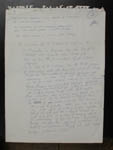 "Purpose of the Solidarity Call."
"Purpose of the Solidarity Call."There were many attempts to sow dissent and destroy the Soweto Students' Representative Council by detaining students and leaders. At every turn, though, the SSRC recreated itself and student solidarity. "Homes [were] being smashed by riot police," who came "door to door" to arrest students. Police "brutality" and the way the "government has laid the causes at [the] door of agitators," instead of the "criminal … apartheid," had resulted in "hysteria … and therefore the inability to understand."134 Just before the first anniversary of June 16, 1976, a series of pamphlets appeared in Soweto, authored anonymously by "A Black Parent," which called on "The People of Soweto" to stand firm and "resist the servants of darkness who are being paid by communists to spread death, chaos and suffering in the black community." An open letter appealed to all black parents in Soweto and elsewhere:
I have seen many strange and terrible things in my life but none so terrible as the thing I see happening in several parts of the world today where the forces of Communism and revolution have taken to using the child as a pawn in the deadly game of war and disorder that they are playing.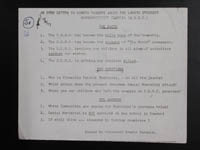 "Open Letter to Parents About SSRC."
"Open Letter to Parents About SSRC."A second pamphlet (signed simply "TO HELL WITH S.S.R.C!!") was a direct attack on the SSRC and, in a strongly worded message set in solid caps, prevailed on "all our people in Soweto and other African townships" to "stand fast":
We feel that it is high time that our people throughout Soweto and other African townships stood fast and put their feet down and bluntly refused to be made puppets and fools out of by the vandals and thieves of the Soweto Students' Representative council and other organisations like it that seem determined to plunge the black race in South Africa into a new dark age of misery, death and destruction.
[…]
We further dare the Soweto Students' Representative Council to publicly deny that they hold the religion, ways and customs of Africa in contempt, that they are agents of Communism who teach our children that there is no God and that drug-taking, free-loving and homosexuality are right and good. We dare them to deny that they are really lackeys and lickspittlings of the African National Congress which is a Communist organization bent on creating disorder and death amongst our people in South Africa.135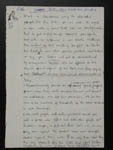 SSRC Reply to slanderous anonymous pamphlet.230
SSRC Reply to slanderous anonymous pamphlet.230The students had to counter such representations, and in a press statement by Gordon Trofomo Sono—after Daniel Sechaba Montsisi was arrested on June 10, 1977, Sono replaced him as leader of the SSRC—the SSRC replied to the "slanderous pamphlet":
What a slanderous way to discredit people. We, the SSRC do not wish to argue in vain with a voice that has no identification. But to put a few things straight we openly and with no bitterness in our hearts challenge the writers of this insufficient pamphlet to strike the truth. To our dear parents, brothers and sisters we say your leaders will not be disheartened by anonymous vandals who are opposed to the dignity and respect of the Black man.136They were intensely sensitive not only to how they were being portrayed by the government and its spokesmen (through their ideological/discursive designs) but also to how that treatment was related to and connected with the practices of the government and the establishment of actual physical control, through detentions, of the protagonists in the uprising:
We are also aware of the system's conspiracy:
- To discredit present and past leadership with the hope of distracting the masses from the leaders.
- To capture present leadership with the hope of retarding the student's struggle and achievements. 137
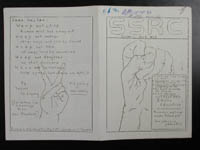 Soweto Students Representative Council (SSRC) pamphlet.
Soweto Students Representative Council (SSRC) pamphlet.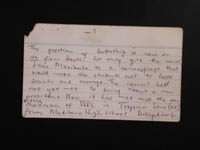 Press release—Gordon Sono.
Press release—Gordon Sono.In response to detentions and police harassment, the changes in leadership were fast—a remarkable feat and certainly telling of the student's resilience and of the strength of their movement, but the leadership changes too needed to be explained. In 1977, after the arrest of Montsisi, the SSRC published a newsletter in which past leaders of the students were fully acknowledged with small biographies of Tsietsi Mashinini, Khotso Seathlolo, and Daniel Sechaba Montsisi. Each new student leader needed quickly to establish his identity, and the documents—letters, notes, diaries—students produced during this time reveal much about those identities. Similarly, student organizations repeatedly asserted their identities through the publication of "histories" and by publicizing both policy and strategy.
 The history of SASM 1976-1979.
The history of SASM 1976-1979.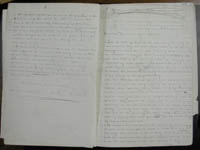 Notebook procedure before and after June 16.
Notebook procedure before and after June 16.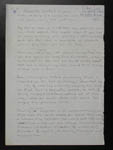 Freedom as seen by a student.
Freedom as seen by a student.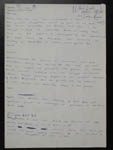 Report on SASM policy.
Report on SASM policy.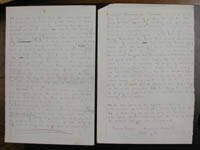 Notebook in defense of SSRC.
Notebook in defense of SSRC.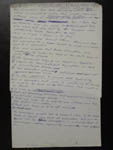 Education—Mazibuko's Thoughts.
Education—Mazibuko's Thoughts.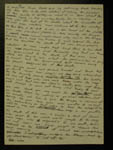 Letter-from Mazibuko to papers on the death of Steve Biko.
Letter-from Mazibuko to papers on the death of Steve Biko.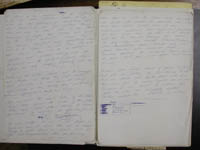 Solidarity.
Solidarity.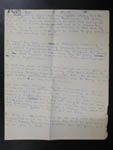 We Categorically Reject.
We Categorically Reject.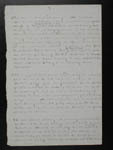 Notebook rent increase statement.
Notebook rent increase statement.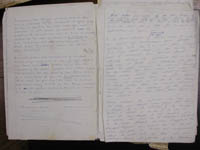 To outside students.
To outside students.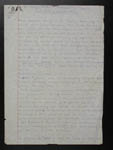 SSRC fact finding mission.
SSRC fact finding mission.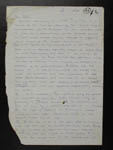 SSRC history.
SSRC history.235 Sensitive that dissent and differences might divide the student movement, a "simple and innocent document meant to arouse or activate the minds of present council members" urged the activists within the SSRC to reflect on their own role and identity within it:
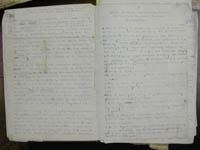 SSRC "Exclusively to Our Oppressed Brothers-Introspection."To assess their genuineness and devotion in the struggle as such. To motivate non-participants and boost the moral of the Junior Secondary School students' leaders, i.e. if they suffer from inferiority complex or lack of expression etc. To expose and eradicate arrogance and vanity from all council members including the able chairman of the SSRC. All members shall be treated equally irrespective of their intelligence, standard, status, or age and experience…138
SSRC "Exclusively to Our Oppressed Brothers-Introspection."To assess their genuineness and devotion in the struggle as such. To motivate non-participants and boost the moral of the Junior Secondary School students' leaders, i.e. if they suffer from inferiority complex or lack of expression etc. To expose and eradicate arrogance and vanity from all council members including the able chairman of the SSRC. All members shall be treated equally irrespective of their intelligence, standard, status, or age and experience…138The students of Soweto invoked the names not only of those who had led the movement since its beginnings on June 16 but also, clearly appreciating the powerful response these names would evoke, of those who had suffered and died. After Daniel Sechaba Montsisi was arrested on June 10, 1977, just days before the anniversary of the uprising, Trofomo Sono, in Form 4 at Madibane High School and described as a "brilliant student," faced the daunting challenge of being the newly elected leader of the SSRC. In his notebook he wrote:
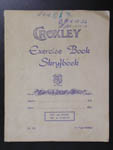 Trofomo Sono's exercise book.I don't know how I became a leader, but it was neither guts nor intellect—yet suffering. My sufferings are no the kind of suffering that I suffer because of my suffering as an individual—yet a national suffering of all black man. A black man know suffering today—because of oppressive measures at each and every stinking corner of South Africa.139
Trofomo Sono's exercise book.I don't know how I became a leader, but it was neither guts nor intellect—yet suffering. My sufferings are no the kind of suffering that I suffer because of my suffering as an individual—yet a national suffering of all black man. A black man know suffering today—because of oppressive measures at each and every stinking corner of South Africa.139He made his first public appearances at the various commemorative services for the anniversary of June 16 and at a series of student funerals.140 At one of these, when "the daily chaos and crisis of Soweto have brought us once more to a ceremony of tears and tribute," he addressed the deceased and asked her to deliver a message to all the others "who have sacrificed their lives for social change." The words reflected both the broader struggle and the immediate fears for Daniel Sechaba Montsisi, whose detention was all the more ominous for the knowledge of what had happened to others in detention:
240Tell Hector Petersen that we are still sweating with the educational crisis and the discriminative measures.
[…]
Do not forget to Mathews Mabelane141 that Sechaba has been detained. Detained to bring social changes in this country, detained to solve the educational crisis of this country and of course, for them to rest in hope. Tell Ntshuntsha that we do not know what will be happening to Sechaba—he might decide to suffer from heart attack, he might start playing with vests around his neck, he might make a mistake by taking his soap along to the shower, or rather—jumping from the peak of John Vorster Square. Tell all of them not to allow him to do all this, for he has not yet finished serving the people.142The students were also aware of their limitations and, as has been noted, called on the Black Parents' Association to act as their mouthpiece:
The purpose of the solidarity call on the 16 December ex Dingaans Day, now Day of the Covenance, Convenance [Covenant] also 6 months since Soweto first blew its lid the first [reactions? unclear] of generations surfaced. On the day of the Covenance we the black people of S.A. along with all those who stand for change should try and understand student grievance and aspirations. On this day we should also at 12 for 5 minutes observe silence for our dead.
[…]
What can we do but by some effort of calling people together through churches and also concerned bodies to use 16th December as a day of bringing about an understanding of the true situation. Bridge the generation gap and understand and support our children. But at all times using passive means. "Purpose of the Solidarity Call"
"Purpose of the Solidarity Call"The student who wrote this "solidarity call" speech also had a strong sense of history, appealing directly to the events of 1960 (Sharpeville) that, in the political culture of South Africa, loomed large in the consciousness of tragedy and in memory of resistance:
Hector Peterson one of the first martyrs symbolizes our young who have died for asking to be treated as simple [?] human beings with full rights. But remember 1960 a baby was killed on its mothers back by the soldiers in Nyanga East. The wounds of present and past has driven the young to revolt.143245 Not only did the government harass, threaten, detain, and interrogate students, but its spokesmen also cynically exploited these stories—especially when student leaders fled the country:
Yutar:So here we have two people now who took an active part in activating the students, Mashinini and Koka, left the country and left the work to you and others.
This [Khotso Seathlolo] is the second so-called leader who has left the country after inciting and instigating you and others to do what I may term all this dirty work.
[…]
And it is a pity that these so-called leaders who were so brave when they were here, did not stay here to face the music as you and others in your position. Sad, isn't it.144The discussion of the departure of Tsietsi Mashinini (and of Koka) from South Africa was revealing of the vast differences in meaning that could be attributed to his leaving. The leading questions of advocate Percy Yutar, speaking very much as the voice of the government, were those of the spiteful and invidious outsider, hoping to exploit any sign of weakness, of a crack in student solidarity, of a rift in the leadership. By September, Morobe was no longer
much in contact with Tsietsi Mashinini for the reason that he was by this time well known and that many pictures of him had appeared in the newspapers. He also informed me that it was no more safe for him to go about on foot and that his friend, Barney Mokgatle was going to provide him with transport and he would now deal with other matters, which he said bluntly.145The slight note of annoyance may have been as much a reaction to what in anecdotal evidence has been described as Tsietsi's somewhat pompous and arrogant attitude as it was an indication of Morobe's disappointment at or criticism of the departure of their leader. He answered Yutar's questions with a simple "yes," only once elaborating: "I feel quite bad about it."
250Related links:
Charles Molele, "The enigma behind June 16," Sunday Times Again, Tsietsi Mashinini may not have been beloved by all, and his position and stature certainly changed over the years, but the government's portrayal of him as a betrayer of the students was without a doubt too sharp and those who had experienced the uprising made their allegiances very clear:And this one, Tsietsi,
[…]
You know he was a nice guy. The time the police were looking for him, they couldn't find him, because he was like a girl. He wears the clothes for girls, shoes, and just pass through the police. They couldn't see him, … yes… Because now, they … one, they were, they said, if somebody can get Tsietsi …, I don't know how much they offer, I don't remember … It's when he went to exile.146In a set of handwritten notes for a speech after Tsietsi Mashinini had left the country, Trofomo Sono wrote:
We shall remember Tsietsi, wherever he is, though with painful hearts—but we should know: there is one thing that the authorities cannot force into exile—and that is this idea in men's minds. Tsietsi's body is exiled but the spirit remains with us, and the ideas are with us, so let cary [sic] them out.147 Notebook: In Defense of SSRC.
Notebook: In Defense of SSRC.Montsisi made a similar statement in the following notes for a speech:
255I and the student mass in Soweto still recognize Tsietsi Mashinini as our leader and sole initiator of the June events. Nobody is going to dissociate us from him.148In response to more general news of conflict within the ranks of the Soweto Students' Representative Council, Seeiso Lenkoe wrote in a letter to the Weekend World, after having polled students:
[T]his is not so. The whole issue has been overplayed, directly or indirectly. Unfortunately as one student of the Sekano Ntoane High School said, problems are encountered by any existing organization.
[…]
Another student from Madibane High School said it was unfortunate that when there was a difference of opinion amongst Blacks, they were highlighted as dissension.
[…]
The students are aware that the Press is carrying insinuating reports of its own manufacture regarding the whole situation. It is unfortunate that while some students are busy writing examinations, others are still dying behind bars. A Meadowlands High School student said the whole situation has been exploited by the system [the government] both directly and indirectly.
[…]
I have no doubt our fellow students will understand what she means—as well as those who have been doing the exploiting.149Many people spoke for the children of Soweto, most—if they were not supporting the apartheid government—with the very best of intentions. Looking back over ten years of "children on the march," and acknowledging that it was the stand taken by the children in 1976 that had inspired the sustained resistance against the apartheid regime, the Detainees' Parents Support Committee compared the cohort, or generation, of the mid-1980s with that of the mid-1970s:
A major point of difference between the 1976 period and the present [1986] is that , in the former period, large numbers of young people left the country to swell the ranks of the exiled liberation movements. This is a much rarer phenomenon today, with the young perceiving a greater role for themselves inside the country, fighting for democracy and justice.150Notes:Note 15: Ranajit Guha, "The Prose of Counter-insurgency," Subaltern Studies, no. 2 (Delhi: Oxford University Press, 1983), 32-33. back
Note 16: The number of girls who went into exile, especially in the 1970s, was significant even if their proportion of the total, around 20 percent, was small: Jacklyn Cock, Colonels and Cadres: War and Gender in South Africa (Cape Town: Oxford University Press, 1991). Data is lacking as the role of women has not received attention. Zakes Molotsi, interview by Helena Pohlandt-McCormick, tape recording, Johannesburg, May 1995. back
Note 17: In the period April 1977 to September 1977, 200 people had been released from detention. According to the report Detention without Trial in South Africa: 1976-1977, compiled by the South African Institute of Race Relations (SAIRR), there were accurate records for the lengths of time spent in detention for 148 of those released. They had spent "a combined total of 22,349 days in detention, an average of 151 days." By comparison, in the 14 months prior to the period under investigation (January 1976 to March 1977), 366 people were released from detention without any charges being brought against them. Of these, accurate records of time spent in detention were kept for 341. "They spent a combined total of 30,314 days in detention (an average of 88 days)"—considerably lower. By 1977, therefore, the length of time people remained in detention, often without charges being brought against them, had increased to almost double and the police were holding onto people with impunity. South African Institute of Race Relations, "List of People in Detention as at 30 September, 1977," Detention without Trial in South Africa: 1976-1977 (Johannesburg: South African Institute of Race Relations, 1977), ii-iii. back
Note 18: Zakes Molotsi, interview by Helena Pohlandt-McCormick, tape recording, Johannesburg, May, 1995. back
Note 19: The police report that accompanies the inventory list of documents seized during the search of Gwazela's rooms was dated 24 November 1976— SAB WLD 6857 (1977), WRAB v. Santam, vol. 437. In a report published by the South African Institute of Race Relations, the date of her arrest was reported as 11 November 1976—SAIRR, "List of People in Detention as at 30 September, 1977," Detention without Trial in South Africa: 1976-1977 (Johannesburg: South African Institute of Race Relations, 1977), 4. back
Note 20: Sindiswa Gwazela, letter to Nombulelo Makhubu, 9 September 1976. Part of inventory of property seized by Major Burger, 24 November, 1976 at 6:10 P.M., in the bediendekamer (servants' quarters) on the roof of the Metropolitan Heights building in Hillbrow, Johannesburg, at the time of Sindiswa Gwazela's arrest. She identified the property as hers; evidence in SAB WLD 6857 (1977), WRAB v. Santam, box 437. back
Note 21: Sindiswa Gwazela, letter to her daughter Tumie, 9 September 1976, SAB WLD 6857 (1977), WRAB v. Santam, box 437. back
Note 22: Sindiswa Gwazela to Nombulelo Makhubu, letter, 9 September 1976, SAB WLD 6857 (1977), WRAB v. Santam, box 437. back
Note 23: Sindiswa Gwazela to Thabo, letter, 24 November 1976, SAB WLD 6857 (1977), WRAB v. Santam, box 437. back
Note 24: Ibid. back
Note 25: Ibid. back
Note 26: Ibid. back
Note 27: Ibid. back
Note 28: After the revelation that, during autopsy, unauthorized incisions had been made on the dead man's body, thus possibly obscuring any evidence of foul play on the part of the police, an official inquest into his death revealed that he had been "in solitary confinement at the time of his death after being questioned for three days by Springs Security Police" and that "on his ears were marks that could have been caused by electrical contact;" the court ruled that the death had been by hanging, probably suicide, and that "no living person could be held responsible" (South African Institute of Race Relations, Survey of Race Relations in South Africa: 1977 [Johannesburg: SAIRR, 1978], 155; and South African Institute of Race Relations, Detention without Trial in South Africa, 1976-1977 [Johannesburg: SAIRR, 1977], 55-56). The Rand Daily Mail reported on 2 February 1977 that 3,000 people attended his funeral and that a student leader who had paid tribute to the dead detainee said he had been "a man who worked for the students and was dedicated to the liberation of the oppressed in the country" (Rand Daily Mail, 7 February 1977). back
Note 29: SAB WLD 6857 (1977), WRAB v. Santam, vol. 413. back
Note 30: Maanda Mulaudzi, October 1998. back
Note 31: See Mamphela Ramphele, Across Boundaries: The Journey of a South African Woman Leader (New York: Feminist Press, 1995), and Barney N. Pityana, N. Barney, Mamphela Ramphele, Malusi Mpumlwana and Lindy Wilson, Bounds of Possibility: The Legacy of Steve Biko and Black Consciousness (Cape Town: David Philip, 1991). back
Note 32: The literature on Soweto is marked by this Soweto-centric view. In her book Black Power, for example, Gail Gerhart in her discussion of the student uprisings refers to the Soweto uprising as "continuing urban disorder" and to its participants as "an urban African population" (my emphasis)—Gerhart, Black Power in South Africa: The Evolution of an Ideology (Berkeley: University of California Press, 1978), 313, 315. back
Note 33: My thanks for clarification and comment to Maanda Mulaudzi, himself a member of ZASO, who went into exile in Botswana with Ramabulana in late 1977 (conversation with Helena Pohlandt-McCormick, 29 October 1998). back
Note 34: Botswana authorities were trying to catch those who, with the young activists, left the country to infiltrate the South African resistance movements, such as the ANC and PAC, abroad. They were also acting in accordance with the wishes of the South African authorities who maintained fairly tight controls over policy in Botswana. back
Note 35: Maanda Mulaudzi, conversation with Helena Pohlandt-McCormick, 29 October 1998. back
Note 36: Zoutpansberg Students' Organisation (ZOSO), handwritten report, 4 June 1977. back
Note 37: Sam Mashaba, interview by Helena Pohlandt-McCormick, tape recording, Johannesburg, September 1993. back
Note 38: Zoutpansberg Students' Organisation (>ZOSO), handwritten report, 4 June 1977. back
Note 39: Sam Mashaba, interview by Helena Pohlandt-McCormick, tape recording, Johannesburg, September 1993. back
Note 40: Zoutpansberg Students' Organisation (ZOSO), handwritten report, 4 June 1977. back
Note 41: Ibid. back
Note 42: Sam Mashaba, interview by Helena Pohlandt-McCormick, tape recording, Johannesburg, September 1993. back
Note 43: Maanda Mulaudzi, conversation with Helena Pohlandt-McCormick, 29 October 1998. Nozipho Diseko has pointed to similar "obstacle[s] encountered by the African Students' Movement," the precursor to SASM (South African Students' Movement), "in its campaign for Student Representative Councils and its efforts to expand its influence in the schools" even before what she has designated the "Black Consciousness Era: 1972-1975": "Added to this was the difficulty of winning over pupils from the Student Christian Movement. […] To win student support, key figures in the Student Christian Movement … were targeted for persuasion to join the African Students' Movement." Nozipho Diseko, "The Origins and Development of the South African Student's Movement (SASM): 1968-1976," Journal of Southern African Studies 18, no. 1 (March 1991): 52. back
Note 44: Maanda Mulaudzi, conversation with Helena Pohlandt-McCormick, 29 October 1998. back
Note 45: Zoutpansberg Students' Organisation (ZOSO), handwritten report, 4 June 1977. back
Note 46: Ibid. back
Note 47: Karis and Gerhart, Nadir and Resurgence, 1964-1979, vol. 5 of From Protest to Challenge, 175. back
Note 48: Minutes, meeting of the South African Students' Movement, Fourth General Students' Council, 4-7 July 1977, St. Ansgars Conference Centre, Roodepoort. From documents confiscated by the South African Police during the raid of SASM headquarters at 505 Lekton House, 19 October 1977, SAB WLD 6857 (1977), WRAB v. Santam, vol. 413. back
Note 49: Relations between student activists in the city and in the countryside were not always amicable, though, and, as Sifiso Ndlovu, one of the younger student participants from Soweto, has pointed out to me, "I am also aware that a large sizeable number of students went to rural schools and to areas outside the confines of Johannesburg to further their education because of extended family ties, others went into exile as we know, others were sent to boarding schools by their parents because there was no effective schooling in Soweto for about ten years. I also took a different route—so maybe those 'Soweto students in exile' were influential in local school/student politics in whatever area they trekked to. This was a disturbing trend when I was at University in Pietermaritzburg. What I noticed was that student politics were dominated by students who in one way or another were from the Rand—most of them were opportunists and were disgusting as far as their attitude towards local students were concerned, I exempt myself. It's the old 'provincialism' debate that also characterises white politics." Sifiso Ndlovu, letter to Helena Pohlandt-McCormick, 18 November 1998. back
Note 50: Seth Mazibuko, handwritten draft of "the history of SASM from 1976-1977," undated. From documents confiscated by the South African Police during the raid of SASM headquarters at 505 Lekton House, 19 October 1977, SAB WLD 6857 (1977), WRAB v. Santam, vol. 413. back
Note 51: Seth Mazibuko, letter to "Dear Chairman," signed, 28 September 1977, about detention of SASM leaders. From documents confiscated by the South African Police during the raid of SASM headquarters at 505 Lekton House, 19 October 1977, SAB WLD 6857 (1977), WRAB v. Santam, vol. 413. back
Note 52: Seth Mazibuko, handwritten letter to the "President," undated. From documents confiscated by the South African Police, during the raid of SASM headquarters at 505 Lekton House, 19 October 1977, SAB WLD 6857 (1977), WRAB v. Santam, vol. 413. back
Note 53: Seth Mazibuko, handwritten letter to the branch / general secretaries of SASM, circa October 10, 1977 (date of seminar mentioned in letter) to October 19, 1977, when the headquarters of SASM at 505 Lekton House, Johannesburg, were raided by the South African Security Police. From documents confiscated during the raid, SAB WLD 6857 (1977), WRAB v. Santam, vol. 413. back
Note 54: Murphy Morobe, testimony, 9 February 1977, SAB K345, vol. 148, part 19, Commission Testimony vols. 102-3, p.4931. back
Note 55: Ibid. back
Note 56: Karis and Gerhart, Karis and Gerhart, Nadir and Resurgence, 1964-1979, vol. 5 of From Protest to Challenge, 173. back
Note 57: Aubrey Dundebele Mokoena, testimony, 8 February 1977, SAB K345, vol. 148, Commission Testimony vol. 101, p. 4807: "BPC (Black Peoples Convention) and SASO (South African Students' Organisation), that is the Reef Branch, are almost one because of common membership. SASO and BPC together with other Black organisations, on the 21st June merged to constitute the BPA (Black Parents Association)," which thus also had members with affiliations to other groups. back
Note 58: Aubrey Dundebele Mokoena, testimony, 7 February 1977, SAB K345, vol. 148, Commission Testimony vol. 100, p. 4802. back
Note 59: Abram Tiro at Morris Isaacson, Aubrey Mokoena, Lindelwe Mabandla, and Charles Mthombeni at Orlando North Secondary School; Thabile Kubheka at Orlando High School; Edward Kubhayi and Thomas Manthata at Sekantoane High School; Jake Selibi at Orlando West High School; Cyril Ramaphosa and Lybon Mabaso at Meadowlands High School; Ribbon Moshodi at Thomas Mofolo Secondary School. Aubrey Dundebele Mokoena, testimony 8 February 1977, SAB K345, vol. 148, Commission Testimony vol. 101, p. 4832. back
Note 60: Aubrey Dundebele Mokoena, testimony, 8 February 1977, SAB K345, vol. 148, Commission Testimony vol. 101, p. 4832. back
Note 61: Although protests against Afrikaans began at Thomas Mofolo Secondary School, the major role was played by Morris Isaacson High School, where Tsietsi Mashinini, who was president of the SASM regional branch, and Murphy Morobe, vice chairman of the SSRC (Soweto Students' Representative Council), went to school. The school, according to Mokoena, had a "tradition of militancy which was created at the time of Abram Tiro," who was teaching there as a history master, a position that gave him the "opportunity of preaching Black Consciousness." Many students idolized him. The school became the nucleus of the unrest and almost all meetings of the SSRC were held there. Aubrey Dundubele Mokoena, testimony, 8 February 1977, SAB K345, vol. 148, Commission Testimony vol. 101, p. 4808. back
Note 62: Aubrey Dundubele Mokoena, testimony, 8 February 1977, SAB K345, vol. 148, Commission Testimony vol. 101, p. 4808. back
Note 63: Nthatho Motlana, quoted in Winnie Mandela, Part of My Soul Went with Him, ed. Anne Benjamin and adapted by Mary Benson (New York: Norton, 1985), 115-16. Motlana was the Mandelas' family doctor and the appointed guardian of the Mandela children. back
Note 64: The South African Institute of Race Relations reported that Mokoena was arrested 15 August 1976 and released 4 April 1977, thus spending 233 days in detention. South African Institute of Race Relations, Detention without Trial in South Africa: 1976-1977 (Johannesburg: SAIRR, 1977). back
Note 65: Aubrey Dundubele Mokoena, testimony, 7 February 1977, SAB K345, vol. 148, Commission Testimony vol. 100, pp. 4804-5. back
Note 66: Emma Gilbey, The Lady: The Life and Times of Winnie Mandela, (London: Vintage, 1994), 109. back
Note 67: Ibid., 104. back
Note 68: Nthatho Motlana, quoted in Winnie Mandela, Part of My Soul Went with Him, 115-16. back
Note 69: See also Karis and Gerhart, Nadir and Resurgence, 1964-1979, vol. 5 of From Protest to Challenge, 170. back
Note 70: Sifiso Mxolisi Ndlovu, The Soweto Uprisings: Counter-memories of June 1976 (Randburg, South Africa: Raven Press, 1998). back
Note 71: The American equivalent would be junior high school or middle school. back
Note 72: Ndlovu, Counter-memories, 3. back
Note 73: Membership in SASO was limited to "students" enrolled in institutions of higher (tertiary) learning, with associate membership—largely to enable members of other organizations to sit in on meetings as observers—conferred on others at the discretion of the executive. In this capacity as observer for SASM, Tsietsi Mashinini accompanied Aubrey Mokoena to the SASO (South African Students' Organisation) conference at Hammanskraal in July 1976. back
Note 74: There are two accounts of the meeting: (1) South African Student Movement, minutes, Third General Students' Council, St. Ansgars Conference Centre, Roodepoort, 28-30 May 1976, handwritten document confiscated by the South African Police during the raid of SASM headquarters at 505 Lekton House, 19 October 1977, SAB WLD 6857 (1977), WRAB v. Santam, vol. 413; and (2) Zweli Sizane, statement, 12 August 1976, John Vorster Square, SAB K345, vol. 99, part 3, pp. 11, 17. The resolution was proposed by Tebello Motapanyane and seconded by Themba Hlatshwayo. There are slight differences between the typed version of these minutes and the handwritten version. In Zweli Sizane's version, Msuvukile Maqethuka seconded the resolution. back
Note 75: Zweli Sizane, statement, 12 August 1976, John Vorster Square, SAB K345, vol. 99, part 3, pp. 11, 17. back
Note 76: Paul Ndaba, in Counter-memories, 34. back
Note 77: Ndlovu, Counter-memories, 3: "It is worth noting that this [the directive that Afrikaans should be the medium of instruction] only affected Forms One and Two. The senior students—that is, Form Three in our school and at high schools throughout Soweto—were excluded." back
Note 78: Seth Mazibuko in Two Decades … Still, June 16, film produced by Loli Repanis, directed by Khalo Carlo Matabane, for SABCTV, aired 16 June 1996. back
Note 79: Zweli Sizane, statement, 12 August 1976, John Vorster Square. SAB K345, vol. 99, part 3, 11 and 17. While the objection may be raised that Zweli Sizane was trying to clear himself with this statement, there is sufficient evidence from other sources that he did indeed accompany the two journalists, thus remaining somewhat apart from the march and the ensuing clashes, and that he tried to restrain students from further violence. See Two Decades … Still, June 16. back
Note 80: Zweli Sizane, statement 12 August 1976, John Vorster Square. SAB K345, vol. 99, part 3, p. 13. back
Note 81: Sibongile M. Mkhabela in Two Decades … Still, June 16. Sibongile Mkhabela was a student at Naledi Senior Secondary School and was elected organizing secretary of SASM at its meeting on Sunday, 13 June, 1976, during which "a student from Orlando High, whom he [Tebello Motapanyane] did not know, had suggested to the meeting that in showing solidarity with the schools that were on strike against Afrikaans being used as a medium of instruction, all the schools in Soweto should demonstrate on Wednesday, the 16th of June" (Zweli Sizane, statement, 12 August 1976, SAB K345, vol. 99, part 3). The Action Committee was created at this meeting: Seth Mazibuko (Phefeni Junior Secondary School), Tsietsi Donald Mashinini (Morris Isaacson), David Kutumela (Naledi High School?), Murphy Morobe (Morris Isaacson), Isaiah Molefe (Belle Primary School) and Kehla [?] (Morris Isaacson): "The form the demonstration was to take was to have all the students from different schools marching to Phefeni Junior Secondary School. Then David Kutumela had suggested to the meeting that if the Police came, then they were to be stoned by the students. Both these suggestions were accepted by the meeting, Tebello Motapanyane told me" (Zweli Sizane, statement, 12 August 1976, SAB K345, vol. 99, part 3). back
Note 82: Seth Mazibuko, in Two Decades … Still, June 16, produced by Loli Repanis, directed by Khalo Carlo Matabane, for SABCTV, aired 16 June 1996. back
Note 83: John Robbie Show, Radio 702 Talk Radio, commemoration of 16 June 1976 on its thirteenth anniversary, 16 June 1993. back
Note 84: Ibid. back
Note 85: Ndlovu, Counter-memories, 14-15. back
Note 86: Aubrey Dundubele Mokoena, testimony, 8 February 1977, SAB K345, vol. 148, Commission Testimony vol. 101, p. 4812. back
Note 87: See Ndlovu, Counter-memories, 46. The several testimonies in Ndlovu's Counter-memories illustrated the different "influences that existed within the schools and classrooms." back
Note 88: Ndlovu, Counter-memories, 14-15. back
Note 89: Daniel Sechaba Montsisi, testimony, 22 July 1996, Truth and Reconciliation Commission, Human Rights Violations, Submissions (Questions and Answers), case: Soweto—June 16 Hearings, day 1. back
Note 90: Murphy Morobe, testimony before the Truth and Reconciliation Commission, Human Rights Violations, Submissions—Questions and Answers, 23 July 1996, case: Soweto, Johannesburg, day 2. Transcript available at Truth and Reconciliation Commission, http://www.doj.gov.za/trc/trc_frameset.htm (Human Rights Violations, Hearings and Submissions; Hearing Transcripts; Johannesburg; Victim Hearings; Murphy Morobe [accessed 3 September 2004]) back
Note 91: Zweli Sizane, statement 12 August 1976, John Vorster Square. SAB K345, vol. 99, part 3. back
Note 92: Daniel Sechaba Montsisi, testimony, 22 July 1996, Truth and Reconciliation Commission, Human Rights Violations, Submissions (Questions and Answers), Case: Soweto—June 16 Hearings, day 1. back
Note 93: The spelling of this school's name vary: Sekanontoane, Sekano Ntoane. back
Note 94: Murphy Morobe, testimony before the Truth and Reconciliation Commission, Human Rights Violations, Submissions—Questions and Answers, 23 July 1996, case: Soweto, Johannesburg, day 2. Transcript available at Truth and Reconciliation Commission, http://www.doj.gov.za/trc/trc_frameset.htm (Human Rights Violations, Hearings and Submissions; Hearing Transcripts; Johannesburg; Victim Hearings; Murphy Morobe [accessed 3 September 2004]). back
Note 95: Daniel Sechaba Montsisi, testimony before the Truth and Reconciliation Commission, Human Rights Violations, Submissions—Questions and Answers, 22 July 1996, case: Soweto—June 16 Hearings, day 1. Transcript available at Truth and Reconciliation Commission, http://www.doj.gov.za/trc/trc_frameset.htm (Human Rights Violations, Hearings and Submissions; Hearing Transcripts; Johannesburg; Victim Hearings; Daniel Sechaba Montsisi [accessed 6 September 2004]) back
Note 96: Zweli Sizane, statement, 12 August 1976, John Vorster Square. SAB K345, vol. 99, part 3. back
Note 97: Zweli Sizane, statement, 12 August 1976, John Vorster Square, SAB K345, vol. 99, part 3, p. 14. back
Note 98: Sibongile M. Mkhabela in Two Decades … Still, June 16. back
Note 99: Zweli Sizane, statement, 12 August 1976, John Vorster Square, SAB K345, vol. 99, part 3, p. 15. back
Note 100: Murphy Morobe testimony before the Truth and Reconciliation Commission, Human Rights Violations, Submissions—Questions and Answers, 23 July 1996, case: Soweto, Johannesburg, day 2. Transcript available at Truth and Reconciliation Commission, http://www.doj.gov.za/trc/trc_frameset.htm (Human Rights Violations, Hearings and Submissions; Hearing Transcripts; Johannesburg; Victim Hearings; Murphy Morobe [accessed 3 September 2004]). back
Note 101: Daniel Sechaba Montsisi, testimony before the Truth and Reconciliation Commission, Human Rights Violations, Submissions—Questions and Answers, 22 July 1996, case: Soweto—June 16 Hearings, day 1. Transcript available at Truth and Reconciliation Commission, http://www.doj.gov.za/trc/trc_frameset.htm (Human Rights Violations, Hearings and Submissions; Hearing Transcripts; Johannesburg; Victim Hearings; Daniel Sechaba Montsisi [accessed 6 September 2004]) back
Note 102: Lilli Mokganyetsi, interview by Helena Pohlandt-McCormick, tape recording, Johannesburg, December 1993. back
Note 103: Rodney Paul Rammekoa, testimony, 8 February 1977, SAB K345, vol. 148, part 19, Commission Testimony vol. 101, p. 4847. back
Note 104: Daniel Sechaba Montsisi, testimony before the Truth and Reconciliation Commission, Human Rights Violations, Submissions—Questions and Answers, 22 July 1996, case: Soweto—June 16 Hearings, day 1. Transcript available at Truth and Reconciliation Commission, http://www.doj.gov.za/trc/trc_frameset.htm (Human Rights Violations, Hearings and Submissions; Hearing Transcripts; Johannesburg; Victim Hearings; Daniel Sechaba Montsisi [accessed 6 September 2004]) back
Note 105: Janet Goldstein, the daughter of Dr. Edelstein, was one of the witnesses that spoke before the Truth and Reconciliation Commission during it's Soweto Hearings in 1996. She also appeared, in 1995, as one of the guest speakers on the annual call-in radio show hosted by Radio 702 every year June 16. back
Note 106: Sizane did not know the students who led the march from Sekano-Ntoane Senior Secondary School, via Senoane Junior Secondary School and Tbhongo Junior Secondary School of Dlamini, "for we don't have any branch of SASM in these schools." SAB K345, vol. 99, part 3, p. 12. back
Note 107: Zweli Sizane, statement, 12 August 1976, John Vorster Square, SAB K345, vol. 99, part 3, p. 16. back
Note 108: This is from the original police report of Lieutenant Colonel Kleingeld, who was in charge of the group of more than 40 police officers who first confronted the schoolchildren on the morning of 16 June 1976. Kleingeld is alleged to have shot and killed Hastings Ndlovu and Hector Pieterson; he apparently gave his men no orders to shoot, although some undoubtedly did. Johannes Augustinus Kleingeld (Lieutenant Colonel, South African Police, Orlando), testimony, 14 September 1976, SAB K345, vol. 139, file 2/3, part 1, Commission Testimony vol. 4. back
Note 109: Lilli Mokganyetsi, interview by Helena Pohlandt-McCormick, tape recording, Johannesburg, December 1993. back
Note 110: Murphy Morobe, testimony, 9 February 1977, SAB K345, vol. 148, part 19, Commission Testimony vols. 102-3, p. 4911. back
Note 111: Murphy Morobe, testimony before the Truth and Reconciliation Commission, Human Rights Violations, Submissions—Questions and Answers, 23 July 1996, case: Soweto, Johannesburg, day 2. Transcript available at Truth and Reconciliation Commission, http://www.doj.gov.za/trc/trc_frameset.htm (Human Rights Violations, Hearings and Submissions; Hearing Transcripts; Johannesburg; Victim Hearings; Murphy Morobe [accessed 3 September 2004]) back
Note 112: Zakes Molotsi, interview by Helena Pohlandt-McCormick, tape recording, Johannesburg, May, 1995 back
Note 113: Martin Mohlaba, "Singing, They Marched," Rand Daily Mail, Johannesburg, 5 August 1976. back
Note 114: Carol Hermer, The Diary of Maria Tholo (Johannesburg: Ravan Press), 25. back
Note 115: Mbulelo Vizikhungo Mzamane, "The Day of the Riots," in Hungry Flames and Other Black South African Short Stories, ed. Mbulelo Vizikhungo Mzamane (Harlow: Longman, 1986), 136, xxiv (introduction). back
Note 116: Aubrey Dundebele Mokoena, testimony, SAB K346, vol. 148, part 19, Commission Testimony vol. 100, p. 4773-76. back
Note 117: Lindy Wilson, "Steve Biko: A Life," in Bounds of Possibility: The Legacy of Steve Biko and Black Consciousness, ed. Barney Pityana, Mamphela Ramphele, Malusi Mpumlwana, Lindy Wilson (David Philip: Cape Town, 1991), p. 27 back
Note 118: Njabulo Nkonyane, in Ndlovu, Counter-memories, 35. back
Note 119: Aubrey Dundubele Mokoena, testimony, SAB K346, vol. 148, Commission Testimony vol. 100, p. 4773-76. back
Note 120: "South African Students' Movement's History," 1975-76, document confiscated by the South African Police during the raid of SASM premises at 505 Lekton House, Johannesburg, 19 October 1977, SAB WLD 6857 (1977), WRAB v. Santam, box 413. back
Note 121: David Lisiwe Kutumela, testimony, 9 February 1977, SAB K345, vol. 148, file 2/3, part 19, Commission Testimony vol. 103, pp. 4967-78. back
Note 122: Typed letter from Seth Mazibuko, vice president, to "Dear Chairman" [Budeli?], 28 September 1977, and seized by the South African Police during the raid of SASM premises at 505 Lekton House, Johannesburg, 19 October 1977. SAB WLD 6857 (1977), WRAB v. Santam, vol. 413. back
Note 123: Seth Mazibuko, handwritten letter to Father Kearns, dated 17 October 17 1977, confiscated by the South African Police during the raid of SASM premises at 505 Lekton House, Johannesburg, 19 October 1977, SAB WLD 6857 (1977), WRAB v. Santam, vol. 413. back
Note 124: Ndlovu, Counter-memories, 46. back
Note 125: Students' experiences definitely varied across age groups and other lines of division, and the presence and quick leadership of Seth Mazibuko at his own school (Phefeni Junior Secondary School) is an indication of the speed with which the students did learn. back
Note 126: Aubrey Dundubele Mokoena, testimony, 7 February 1977, SAB K345, vol. 148, Commission Testimony vol. 100, pp. 4773-76. back
Note 127: Aubrey Dundubele Mokoena, 7 February 1977, SAB K345, vol. 148, Commission Testimony vol. 100, p. 4778. back
Note 128: Aubrey Dundubele Mokoena, testimony, 7 February 1977, SAB K345, vol. 148, Commission Testimony vol. 100, p. 4779. It is also possible, of course, that Mokoena might, in his testimony, have been trying to portray himself as free of blame in the way things turned out—i.e., that he had not cautioned the students as to, first, the illegality (according to the authorities) of the march and, second, the likelihood of a confrontation with police and a violent clash, that the responsibility lay with students for the turn of events because they had planned this, and that, by deflecting responsibility to the students who had planned this, he was not himself implicated. That interpretation is suggested by the phrase "I did not quite approve of the idea [that they should not let themselves be stopped by the police]." back
Note 129: Aubrey Dundubele Mokoena, testimony, 7 February 1977, SAB K345, vol. 148, Commission Testimony vol. 100, p. 4780. back
Note 130: Aubrey Dundubele Mokoena, testimony, 7 February 1977, SAB K345, vol. 148, Commission Testimony vol. 100, pp. 4788, 4780. back
Note 131: Advocate van Graan during testimony by Aubrey Dundubele Mokoena, 7 February 1977, SAB K345, vol. 148, Commission Testimony vol. 100, p. 4789. back
Note 132: Aubrey Dundubele Mokoena, testimony, 7 February 1977, SAB K345, vol. 148, Commission Testimony vol. 100, p. 4789. back
Note 133: Paul Ndaba, Counter-memories, 34-35. Paul Ndaba was a 17-year-old student at Phefeni Junior Secondary School in 1976. back
Note 134: [Sindiswa Gwazela?], "Purpose of the Solidarity Call on 16 December," handwritten notes, confiscated by the South African Police, SAB WLD 6857 (1977), WRAB v. Santam, box 436. back
Note 135: Pamphlets, documents confiscated by the South African Police during the raid of SASM headquarters at 505 Lekton House, 19 October 1977, SAB WLD 6857 (1977), WRAB v. Santam, WRAB v. Santam, vol. 413. back
Note 136: Gordon Sono, press release, handwritten and undated, among documents confiscated by security police at the time of the arrest of Masabatha Loate, 17 June 1977, SAB WLD 6857 (1977), WRAB v. Santam, vol. 413. back
Note 137: Nana Sabela (detained on 10 June 1977 together with Daniel Sechaba Montsisi—see SAIRR, Detention without Trial, 27), minute book. The document was seized by security police at the time of her arrest, SAB WLD 6857 (1977), WRAB v. Santam, vol. 436. back
Note 138: "Soweto Students' Representative Council, Exclusively to the Council Members, Introspection," handwritten undated document, Trofomo Sono, notebook found at 1590 Jabulani by Major Visser, at the time of the arrest of Chief Wilson Twala, 17 September 1977, SAB WLD 6857 (1977), WRAB v. Santam, vol. 411. back
Note 139: Trofomo Sono, notebook found at 1590 Jabulani by Major Visser, at the time of the arrest of Chief Wilson Twala, 17 September 1977, SAB WLD 6857 (1977), WRAB v. Santam, vol. 411. back
Note 140: Weekend World, Sunday, 21 August 21 1977, "Amandla! The Story of the Soweto Students' Representative Council, Part Four." back
Note 141: Matthews Mabelane, age 23, fell to his death form the tenth floor of John Vorster Square on 25 February 1977. SAIRR, Survey 1977, 156. For Dr. Ntshuntsha's story, see above. back
Note 142: Trofomo Sono, handwritten notes (undated) for a funeral service, among documents confiscated by Major Visser during the arrest of Chief Twala, 17 September 1977, SAB WLD 6857 (1977), WRAB v. Santam. back
Note 143: [Sindiswa Gwazela?], handwritten notes, "Purpose of the Solidarity Call on 16 December," among materials seized by the South African Police, SAB WLD 6857 (1977), WRAB v. Santam, box 436. This incident was also remembered in the poem, "The Child Who Was Shot Dead by Soldiers at Nyanga," written by Ingrid Jonkers in 1961. back
Note 144: [Sindiswa Gwazela?], handwritten notes, "Purpose of the Solidarity Call on 16 December," among materials seized by the South African Police, SAB WLD 6857 (1977), WRAB v. Santam, box 436. This incident was also remembered in the poem, "The Child Who Was Shot Dead by Soldiers at Nyanga," written by Ingrid Jonkers in 1961. back
Note 145: Murphy Morobe, testimony, 9 February 1977, SAB K345, vol. 148, part 19, Commission Testimony vols. 102-3, p. 4928. back
Note 146: Patience Tshetlo, interview by Helena Pohlandt-McCormick, tape recording, Johannesburg, June 1995. back
Note 147: [Torofomo Sono?], "Morris Isaacson is still what she was before," handwritten notes, among documents confiscated by Mayor Visser during the arrest of Chief Wilson Twala, 17 September 1977, SAB WLD 6857 (1977), WRAB v. Santam, vol. 436. back
Note 148: Daniel Sechaba Montsisi, handwritten notes, SAB WLD 6857 (1977), WRAB v. Santam, vol. 436. back
Note 149: Weekend World, Sunday, 5 March 1977, "Viewpoint." back
Note 150: Detainees' Parents Support Committee, "Abantwana Bazabalaza: A Memorandum on Children under Repression," 19 September 1986, 6. back
